THE WINE MERCHANT.
An independent magazine for independent retailers Issue 148, July 2025



Shop in south Manchester will be based on the revamped Didsbury branch – and a seventh store could also open
Manchester independent Reserve Wines is in expansion mode, with a long-awaited branch in the south of the city expected to open in the near future.
Owner Kate Goodman says the new branch was scheduled to open 18 months ago but has been delayed by redevelopment work on the site.
The branch will be similar in format to Reserve’s Didsbury shop, which has recently been overhauled to incorporate a wine bar and a simple food offer – but with the retail side remaining prominent.
Goodman, who is keeping the exact location of the new shop under wraps, says it’s possible that another opening could be on the cards while she waits for the keys for the south Manchester site. “I always have an eye out,” she told The Wine Merchant.
The south Manchester store “will be a standalone shop like Didsbury”, unlike the branches Reserve has in Altrincham market, the Mackie Mayor food hall in Manchester’s Northern Quarter and Macclesfield’s Picturedrome.
“It’s a bigger space so we can do different stuff there and a few more collaborations,” Goodman says.
“We’d like different food operators to come in and build some exciting events around different food concepts because those events and experiences work so well.
People really enjoy them and it’s a great way of driving new people into the store.”
Reserve also operates a concession at Bents Garden Centre in Warrington, but Goodman describes the location as “quite
limited”, with no flexibility for events or drinking-in. “We would probably move away from that as a direction,” she says.
• Full interview starts on page 16.




Editor and Publisher: Graham Holter graham@winemerchantmag.com
Assistant Editor: Claire Harries claire@winemerchantmag.com
Reporter: Jacob Stokes jacob@winemerchantmag.com
Advertising: Sarah Hunnisett sarah@winemerchantmag.com
Accounts: Naomi Young naomi@winemerchantmag.com
Admin and reader liaison: Charlotte Gingell charlotte@winemerchantmag.com
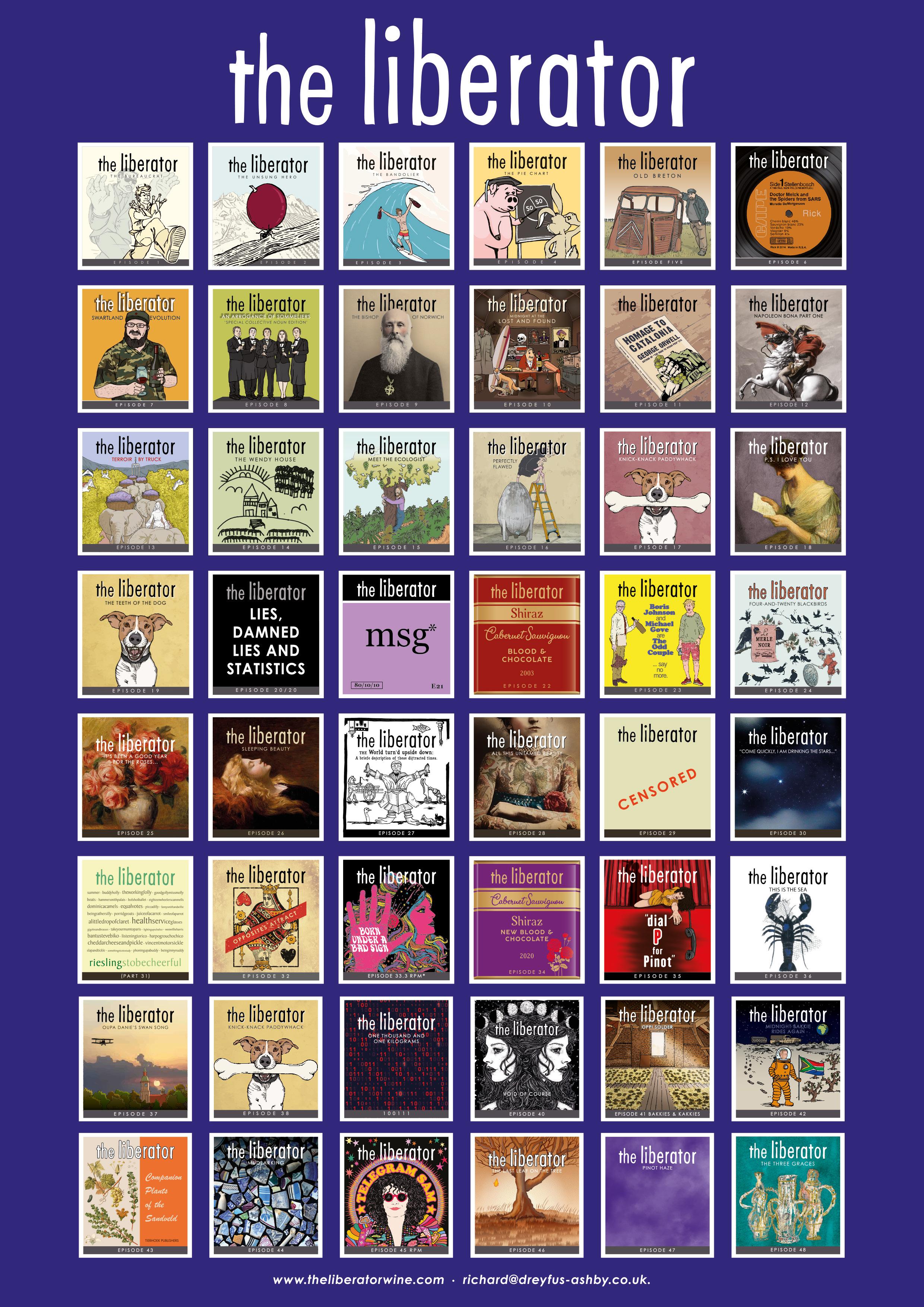

The Drinks Cabinet in Fife is on the move. It’s been a year since Fiona and Peter Allan opened their wine shop in the scenic town of Aberdour and the positive reception from the local community has called for expansion.
The couple have purchased a larger premises in the town and have gone into partnership with Ewan McAndrew and his wife Monica Schneider.
“We absolutely love our current space,” says Fiona. “It’s where The Drinks Cabinet was born, but because it’s a small unit, it doesn’t have a toilet, which means that as a business we can’t offer on-sales, and we can’t do ticketed tasting events.”
Due to the constraints of operating in a historical building (formerly the old post office), the addition of a loo is not possible, so in a move that Fiona jokes as possibly being “the most expensive toilet we’ve ever bought”, The Drinks Cabinet will relocate just a few yards along the high street to an equally interesting premises, but one that already has the required facilities.
“I don’t think we ever thought we’d be able to own such a beautiful space,” Fiona says. “It’s really visible in terms of its location on the high street. It’s housed art galleries, but before that it was the butchers, and it still has the old hanging racks and hooks as well as these beautiful
listed tiles and spiral staircase.
“The current business has been really well received and we feel really supported by the community. There’s definitely a desire for us to try and grow and expand and meet those needs.
“Ewan has been one of the staff team since we originally opened, but he’s always been more than that. He brings a wealth of hospitality experience because he used to be the manager at Fishers in Leith, which is a long-established restaurant with a beautiful wine list. He has the front-ofhouse experience we’ll need if we get the permissions to do the on-premise offering.”
Katherine Nellums is opening New World Wines in Saffron Walden, Essex.
This is the first wine venture for the California native, who has a background in corporate marketing and communications.
“I’m learning everything as I go,” says Nellums, “and so far the industry has been really welcoming and very supportive –it’s been pretty cool. I’ve always admired anybody who’s willing to go out on their own and try something, and had an appreciation for startups and small businesses, so I’m quite excited that I am doing it myself.”
As the name suggests, the shop will focus

solely on new world wines, and Nellums is working with a number of specialist suppliers including RAKQ, Ally Wines, Roberson and Vinos Latinos. English wine will be brought in from local vineyards.
“My first instinct is to try and make the retail and the by the glass as successful as possible,” says Nellums. “I’ve got enough space to do a lot of events so that will be a growing element. While I’m not an interior designer, I’m hoping to give the shop that airy tasting room feel you get when you go to a vineyard. I think there’s lots of interesting things we can do under the umbrella of New World Wine.”
51 Wines in Wellingborough opened in May. The business, owned by Olivier Charlette, started as a wholesaler in 2023, importing wine from Bordeaux.
“We import all our wines. Not only does it give us chance to meet the producers, we control the supply chain to ensure distribution,” says Charlette. “It gives us better flexibility in terms of pricing and quality.
“We started off importing just from Bordeaux and we had very positive feedback and so we expanded to represent more regions. We work with Rhône, Languedoc, Loire, the Pays d’Oc and Burgundy.
“Since we opened the shop we have tried not to have the same product all the time and keep a quick rotation so we are able to keep the interest of our customers.”
A hybrid retailer, 51 Wines offers wine by the bottle or glass to drink in and has regular tasting events. “We like to take our customers on a journey, beyond just the tasting,” says Charlette. “We taste in front of the map and present the appellation, the story behind the wine. We go through what to look for on the label, the shape of the bottle and so on.”
Last month saw the opening of Bastardo in Hackney. An addition to the wellestablished restaurant Lardo, the new wine shop and bar is situated next door and has a completely separate wine offering.
After a career in advertising, which ended after a “life-changing epiphany” on a hike through the Himalayas last year, Nathan Woodhead decided to return to his hospitality roots.
“I was intending to have three or four months off,” he says, “but my friend Eliza called and asked if I fancied helping out with Lardo, and within a month I’d bought out the majority shareholding and I took over properly last November.”
The move isn’t as left-field as it sounds considering that Woodhead had a longstanding association with the business. “I was there when Eliza got the keys 14 years ago and started the restaurant,” he says.
“It’s been a neighbourhood staple, frequented by many. Every time I speak to someone they’ll say ‘Lardo was the first place I went to when I moved to Hackney’, or ‘my friends got married there’. But it was clear that the people who’d been supporting it since it opened had different needs and the area has changed.
“We had a private dining space that was under-utilised and I thought it would be really fun to do something new.
“The park is one of the most popular spots in east London when the sun’s out, so Bastardo was born out of this idea that we could serve the neighbourhood and visitors from afar in a way that we couldn’t adapt Lardo to do.”
Woodhead is “not a wine expert by any stretch”. But he says: “I’ve got some very smart wine people around me. I wanted to create a wine bar environment where anyone could come into and feel happy, engaged and at ease.
“I’ve put together a list of wines I believe are high quality and fun examples of whatever category they are representing. I have five different Lambruscos and an incredible range of pét-nats and orange wines. We’ve also
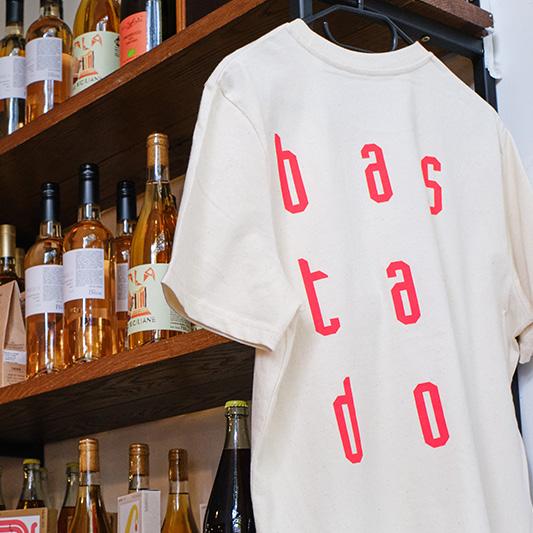
got beautiful Spätburgunders and Rieslings and more classic varieties – just incredible versions of those wines.”
Woodhead is working with suppliers including Provisions, Astrum, True Terroir and Keeling Andrew.


Barks Wine Shop is the latest independent to open in Sheffield.
Owner Charles Cornelius has a background in hospitality as well as experience working in sales for a distillery.
“I was made redundant last Christmas,” he says.
“I didn’t know what I wanted to do, but someone I used to sell to in Sheffield told me about this gorgeous listed building in Leahs Yard. I saw there was a unit available and it just kind of went on from there. The business was really done in reverse.
“I’m not from Sheffield originally but I just fell in love with the city. I feel that it really supports independent businesses, so I decided this is where I’m going to settle.
“I was selling to Starmore Boss before and I still buy some bits and bobs off them, so I keep in touch with them and they have been really supportive of me from day one. Absolutely everyone has in the whole Sheffield community.”
Cornelius says that although the shop is “tiny” he has a “beautiful courtyard” so he can serve drinks outside, weather permitting.
“The drinking-in option really pushes my bottle sales,” he says, “but the retail side will always be the main focus. My vision for the shop is that it’s all really accessible, easy-drinking wines. The main retail price sits between £12 to £30 for still wines with a couple more premium options.


“I’m working with Milestone Wines and rotating between a lot of smaller importers like Beattie & Roberts, Otros Vinos, Wines Under the Bonnet
and Indigo. I fill some gaps with Hallgarten because they have a low minimum order. I have plans to work with lots of other suppliers. I only have around 100 SKUs and we don’t have much space or storage.
“People always ask me, ‘how do you know what wine to like?’ and I just say, ‘have a drink and try’. Sometimes you have to take some losses and try ones that you don’t like and that leads to being able to find the ones you do like.
“That’s why I want the majority of the
wines to change week in and week out.”
As the name of the shop suggests, there is a significant canine in its owner’s life.
“My last name is Cornelius, which is a great name, but I did think Cornelius might just appear a bit too poncey and give the wrong idea of what I was selling,” he says.
“I wanted a one-word name for the shop, and I’ve got a little Jack Russell at home. I love her with all my heart, but she barks an awful lot. A friend of mine created the logo for me and she did an amazing job.”
Seven Cellars in Brighton hopes to be in new premises opposite its main branch in Seven Dials this autumn following years of uncertainty over its lease.
In 2022 owner Louise Oliver’s landlord sold the overarching lease of the premises to the Co-op without telling her. “The first we heard of it was when the Co-op wrote to us and said they’re now our landlord,” she says.
Oliver has now been told that she will have to leave her premises by January to make way for Co-op expansion.
“When it first happened, I phoned our landlord to find out what was going on and he reassured me that we would be fine and that there would be no expansion. I then wanted clarity from the Co-op, who were totally uncommunicative, so that’s when I started a petition,” says Oliver.
“We got 10,000 signatures and lots of people were irate about it. Customers were even writing to the Co-op themselves demanding answers on our behalf.
“The Co-op refused to answer questions or provide any updates because of the
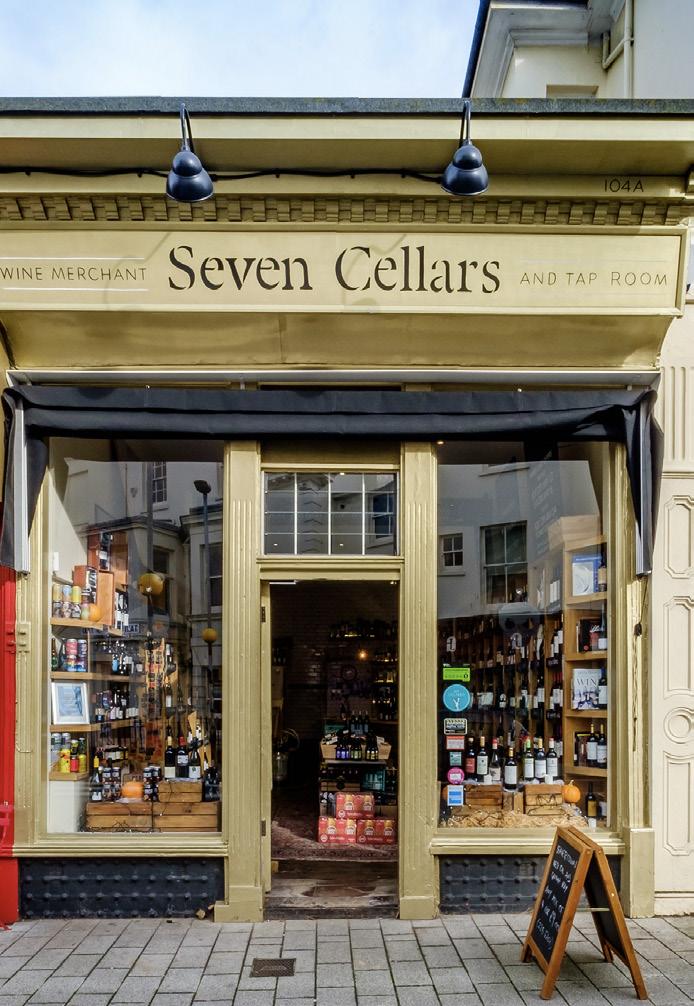
outrage people felt. They wanted to squish the matter by letting the anger die out over time, which inevitably it did after three years of no communication.
“The uncertainty in these past three years has been horrible. I’ve had sleepless nights about it. But from a business standpoint it has absolutely squashed any notion of me opening another shop, because always in the back of my mind I’ve had the possibility of us being kicked out. It’s completely hampered our ability to grow as a business. What they’ve done is unforgivable.”
It’s not just Oliver who has found herself in this position. A finding in March by the Competition & Markets Authority prompted the Co-op to admit to 107 breaches of an order in place to prevent unlawful anti-competitive land agreements.
Oliver says: “On a positive note, the whole thing has given us the time to put a contingency plan in place regarding a new property, which is likely going to happen. It’s super rare that a property comes up in the Seven Dials, so when the property we plan to move to came up two years ago, we began making pre-emptions with the developer which now look to be paying off.
“Our shop was built in 1841, the same year that Charles Dickens wrote The Old Curiosity Shop. A novel about a young woman who had her shop taken off her by an odious old hunchback. Now I’m not a young woman anymore – but the Co-op is certainly an odious old hunchback.”
Seven Cellars has a second branch at Brighton station.
• Kiki Evans, one of the founders of Unwined in Waterloo, is flexing her creative muscles as the press, content and design manager at Alliance Wine. She says: “I’m still involved with Unwined, but the recent changes have opened up a great opportunity to develop my wine career.” Evans and Laura Ward established Unwined in Tooting in 2015, and the Waterloo site three years later, which was recently sold to Amy Caiger.


We know of plenty of suppliers who are happy to hit the road and put some miles on the clock in their quest to meet independent merchants. But not too many who have gone on to create a tour T-shirt based on their itinerary. Congratulations to Georgi Panayotov of The Jolly Merchants, who was seen sporting this collectible item of leisurewear at the CEE Wine Fair in London last month, detailing his tour dates in London, Edinburgh, York, Leeds and Salisbury.
Possibly the highlight of the CEE event was a Ukrainian “sherry” from Shabo, imported by Novel Wines. It looked like sherry, and tasted like sherry – and so it should, being made with those classic Jerez varieties, Aligote and Telti-Kuruk.
Caitlin Farrell of Soho Wine Supply is a Cambridge graduate who won an award in 2021 for her essay on Polari, the gay slang that was a feature of London’s underworld from the 1940s. It was introduced into popular culture by Kenneth Williams – a local resident who may well have been a customer of the shop. Sadly he died long before Caitlin was born, dashing any chance for her to vada his eek and to get some fantabulosa material for her project.

Bouquet Wine Cellar in the Derbyshire village of Little Eaton reopened in March.
It started life as a tiny retail unit described by owner Rebecca Tomlinson as “literally a garage”, but has since blossomed into a hybrid shop and bar with the capacity for around 70 people.
“We opened last April,” explains Tomlinson, “but we were looking for somewhere in the same location that we could convert into a shop and bar. Our new place is just across the road from where we started off.”
Tomlinson worked as a manager in the NHS for almost two decades and has a master’s in law but her interest in wine began when she met her husband, who previously worked for Jeroboams and is now in the whisky trade.
“I did my WSET qualification about five years ago, really as a hobby as I wanted to know more about wine,” she says. “When we moved here I said it would be lovely to have a wine bar and a shop one day.
“The opportunity arose last year when
we got the very little shop and I juggled both before leaving my job in February this year, and then opening the new place.”
Tomlinson is working with suppliers including Gonzalez Byass, Berkmann, Graft, Armit, Indigo and Liberty. “We focus quite a lot on sustainability,” she says. “We support other small businesses and get our coffee brewed locally; the milk, pastries and sandwiches are also sourced locally.
“We want to be a community space for people to work from or have a drink with friends and we are the only place in Derby to have Enomatics.
“We talked a lot as a team about how we were going to utilise the Enomatics, but we find it’s better that people just charge up their card when they come in and it gives the freedom to just enjoy their night. We’ve had groups in and a couple of hen dos and I’ll do a little tasting with them. Sometimes you just know they prefer you to talk through the wines in the Enomatic and leave them to it to have fun.
“We are in quite a small village,” she adds, “but the location is really good because there’s quite a lot of surrounding villages that are reasonably affluent. People have got a bit of money to spend.
“Long-term the plan is to look at opening

a second site. Obviously we need to think about geography, but somewhere like Repton would be a good idea if we could find the right place.”

Two years after opening its wholesale operation in Whitby, Tipsea Wines is retailing to the public, with a shop and tasting room set up on the mezzanine floor of its warehouse.
Owned by Chris Hadley and Adam Sheldon, Tipsea wholesales wines sourced from a range of UK suppliers, but Sheldon says he hopes to set up his own importing arm in the future.
“Chris and I started the business to wholesale to restaurants etc in the surrounding area,” he adds, “and we always wanted to have a shop in the long run. We’ve both done our WSET Level 3, and we fell in love with the world of wine.
“So many of our friends and customers have said there was nowhere to buy wine in Whitby other than the supermarket and kept asking us to sell to the public. So we renovated the space above the warehouse and it’s been well received so far. Everyone who has come in says they feel they can browse and relax, and that’s what I wanted.”

Didsbury in Manchester has welcomed a new independent merchant. Cru is a joint venture between Garry Lui, Gavin Stewart and Henry Alassane, who met while working at the Didsbury branch of Reserve Wines.
“I worked there for eight years,” says Lui. “I was manager for about seven years and during that time Henry came on board from one of the other sites because he wanted to learn a little bit more about the retail side of things. He was a very lively and bubbly character.
“Gavin also joined as a wine advisor, and we found that our skill sets at the time were very complementary. I was very organised, Henry very approachable – a
real people person, and Gavin had tons of knowledge about food in particular. He’d lived in Italy for 13 years and worked with a Michelin-starred chef. We established a common work ethic and became friends.”
Alassane and Stewart left Reserve Wines in 2022 and 2023 respectively, followed by Lui 18 months ago. “In May last year, we all met up for a couple of drinks and we thought: we’re not getting any younger, we all still enjoy working in the wine trade and we’re still passionate about sharing our knowledge of wine and food. That’s when we started looking at properties,” says Lui.
“It’s an old building with lots of character. I believe Warburton Street is the oldest street in Didsbury. It’s an old cobbled road, which is pedestrianised and only has access for deliveries.”
The bar area, with capacity for 30 covers, is at the front of the premises, leading
through to the shop. “Even though we’ve got decals on the window to say that we’re a wine bar and a wine shop, people always have that kind of wow-factor reaction as soon as they step through the archway and see walls full of wine.”
Lui says the focus is on sparkling wines. “We’ve got Prosecco, cava, crémant, Champagne, English sparkling, and other sparkling wines from around the world, from Moldova, let’s say, or Poland. We have pét-nats as well.
“All the dishes have either been marinated, cured or cooked in wine. A couple that have proved to be very popular are the Languedoc Toast, which is a smoked mackerel pâté infused with Picpoul de Pinet, served with sourdough and Rioja & Roll Hummus. Gavin makes the hummus and folds in the Rioja and it’s served with Afghan flatbread and pomegranate.”

Summertown Wine Bar in Oxford is now a small-plates restaurant and wine bar called Oxtwo.
Graeme Woodward and Michael Jelley opened the bar in March 2023 as an addition to their two Grape Minds sites. They have now have partnered with Chris
Brewster of the Brewmish pub group to create the new venture.
“We really enjoyed Summertown wine bar as was,” says Woodward, “and it was doing OK for a young business in a challenging climate.
“But we knew what we needed to make it really successful long-term was high quality food, and that’s the one skill set that Mike and I don’t have. We’re not restaurateurs and we don’t have
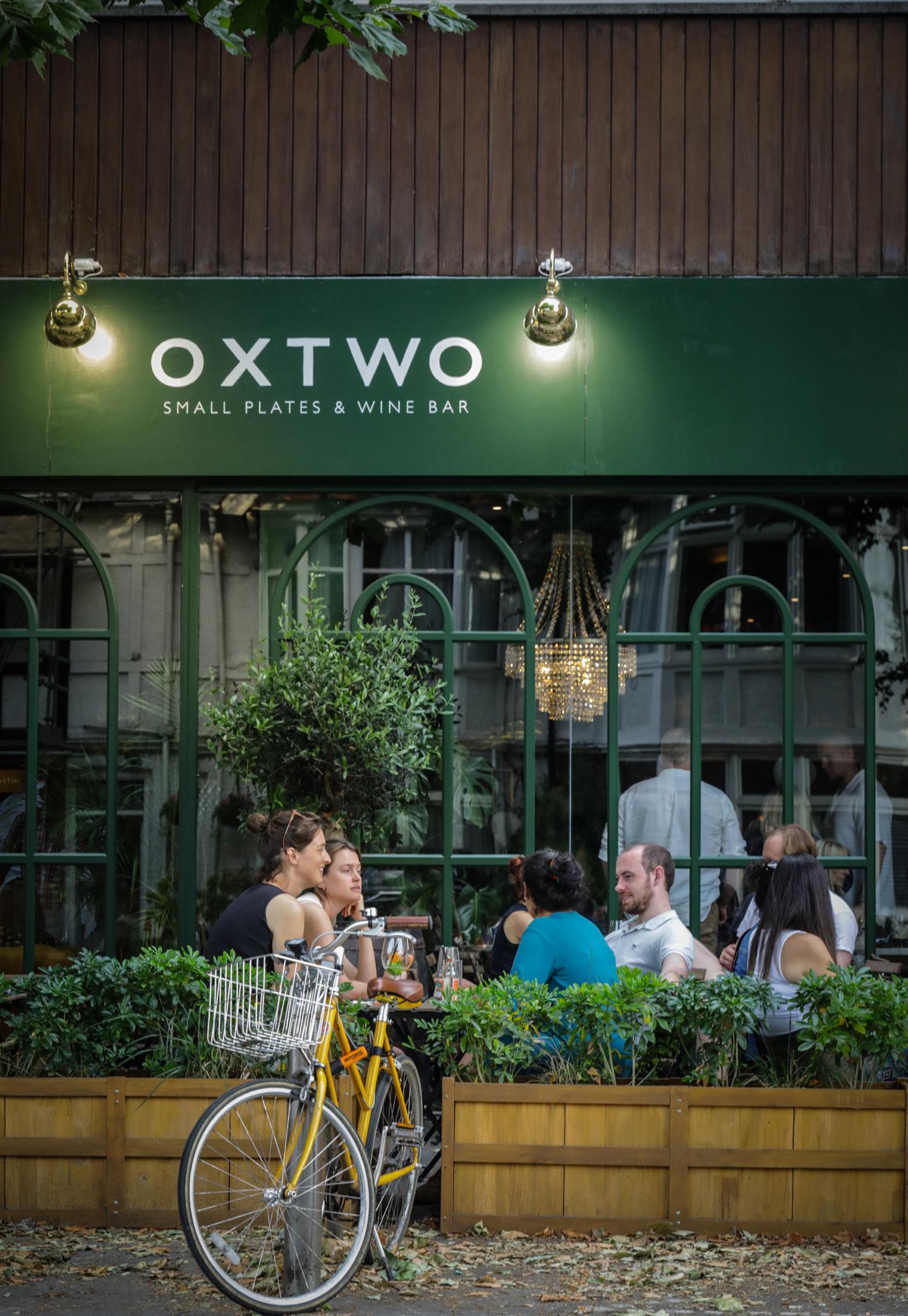
experience in that industry.”
They went for advice to Brewster, an old colleague and friend, whose company owns The Back Lane Tavern and The Duke of Marlborough, and their casual chat soon led to a bigger project.
“The more we talked about how Chris and his executive chef [Johnny Parke] could help us with advice on how to maximise our menu, given the space we had and given our facilities, the more they got excited about the potential of our site.
“They were struggling to find another premises in north Oxford and basically asked if we’d fancy going in 50-50 on the project. They would help fund the renovation works which included the installation of a full blown, state-of-the-art restaurant kitchen.”
Woodward describes it as “a golden opportunity, just too good to refuse”.
He adds: “While we are now owners of only 50% of Oxtwo, it’s still 50% of a pie that is more than twice as big as it was. We’ve got all of Chris’s expertise in running very successful restaurants and pubs and we’ve got Johnny leading the kitchen team. With the new design and décor, it’s now the venue that Mike and I envisaged when we set about this project four years ago.
“In this economy and in a sector such as ours, which is as challenging as ever, the more you can diversify, the better. We’re really glad to be a bit more in the restaurant scene.
“We’ve got close to 200 wines on the wine list and 30 wines by the glass that rotate every few weeks, so it’s fresh every time for people to pop in and try something new.”
• Ann Hayes has sold her shop Ann et Vin in Newark on Trent, Nottinghamshire.
“We completed the sale on March 31, and I am now just doing a few hours a week on a consultancy basis,” says Hayes. “I am a free woman!” The new owners are locals Chantelle and Dave Welsher and Simon and Donna Parr, who also have other businesses in the town.


TRIED & TESTED
Maso Franch Bianco 2017
Manzoni is a variety created in the 1930s by crossing Pinot Blanc with Riesling, which all makes perfect sense after you’ve tasted this blind for the first time.
Grown organically by a Dolomites co-operative, it produces a rounded and citrus-tinged wine, with twists of flint and smoke and a savoury kick on the finish.
RRP: £21.99 ABV: 14%
Cachet Wine (01482 638877) cachetwine.co.uk
There are only 2,000 bottles made of this superb Cab Franc from Bulgaria’s Black Sea coast, and it’s worth trampling over the competition to get hold of some of them. Malolactic fermentation in barrels, and time on fine lees, adds a delightful but subtle creaminess to the vibrant strawberry and raspberry flavours.
RRP: £23 ABV: 13%
The Jolly Merchants (07716 737680) thejollymerchants.co.uk
Odesa Black is a crossing of Alicante Bouschet and Cabernet Sauvignon, creating a juicy wine full of black fruits with a gentle sting on the finish. Vineyards in Ukraine have been damaged, mined and abandoned, so any vignerons who keep working deserve support. But regardless of the tragic context, this is lovely wine.
RRP: £30 ABV: 13.5%
Ukrainian Wine Co (07760 210165) uawines.co.uk
More rosé wine should be made like this. Spicy and salty, coating every inch of the palate. Truly individual, delivering tons of pleasure, with wild strawberries, spiced clementine, dried grass, burnt caramel, cardamon and salted almonds all making an appearance. Explosive, electric, alive.
RRP: £37.20 ABV: 13%
Les Caves de Pyrene (01483 538820) lescaves.co.uk




Meaning “long spear throw” in Aboriginal, Irrewarra hails from a part of Victoria historically known more for agriculture and forestry than viticulture. On these western plains, exposed to the elements, Pinot Noir conveys a rugged, stalky freshness with a vivid fruit depth. Silky and stylish, just as all good Pinot should be, but unconventional too.
RRP: £48.99 ABV: 13.5%
Liberty Wines (020 7720 5350) libertywines.co.uk
Astounding value for money from Alto Adige. Cool, crunchy fruit whirls through icy alpine mists: think white peaches, nectarines, lemon zest and apricot blossom. Tight, tense and focused with loads of finelyetched minerality and an expansive texture. Subtle, sweet spices prickle on a persistent finish.
RRP: £21 ABV: 13%
Astrum Wine Cellars (020 3328 4620) astrumwinecellars.com
Terrific Tenerife wine, elegant in its measured attack of tart fruit which envelops the palate like a vice squeezing every last ounce of flavour. Rieslingesque with its vivid green apple and lime. Distinctly maritime with raw sourdough, olive brine and sea salt tangled in a fine smoky reduction. Precise and vertical in nature but so complex in flavour.
RRP: £37.40 ABV: 11.5%
Indigo Wine (020 7733 8391) indigowine.com
Valtellina is home to the most heroic expression of Nebbiolo: vineyards here need 1,400 hours of manual labour per hectare per year. ArPepe is a standout producer and this is its entry-level offering. Pure and unchained with roses, redcurrants, cranberries and black tea: astonishing energy and drinkability for a variety that’s often so intimidating in its youth.
RRP: £36 ABV: 13.5%
Tutto Wines tuttowines.com





In a nutshell: Invite your customers to join you for a monthly bike ride, with in-store discounts for those who saddle up.
Tell us more …
“The Bike & Bottle club was born of my wife, Sophie, wanting to give me motivation to get out and about – and it benefits the business, too. Once a month on a Thursday evening, we go for a ride and finish back at Bottle & Jug for a drink. Everyone is welcome to join.”
How long have you been doing this?
“We started towards the end of last year, so we’ve done eight now. We do two types of riding. We do a road ride, which enables people that don’t want to do the off-road stuff, or don’t have the bike for it. One customer, for example, is probably 65, very fit, a very social person but she just does road riding. The off-road tends to be a little bit more sporty and we have a very energetic group.”
It sounds nice and sociable.
“I do mountain biking anyway and a lot of our regulars are cyclists, but it’s brought new people along as well, who have basically been looking for friendship as much as anything else. We’ve got a guy that moved to Worthing about a year ago. He’s on his own and bought a house, works very hard, doesn’t have a lot of spare time, doesn’t have many friends locally, and he thought it was a really good opportunity 68: Get on

Graeme Roche Bottle & Jug Department, Worthing
to meet like-minded people and get fit. Another chap runs his own businesses and didn’t have much opportunity to get out and so he comes along.”
How does it all tie in with the shop?
“Anyone that comes on the ride gets 10% off, either to have a beer with us, or a glass of wine in the shop after the ride, but also on anything they want to buy to take home. It’s a great way of getting people through the doors and incentivising them to partake in the rides.”
Is it all very scenic?
“We’ve got the beach and some beautiful surrounding areas, which I thought was a really good reason to get out there and enjoy it. We’ve got a nice route of about 23km up into the Downs – up to Cissbury Ring, over the Chanctonbury Ring and a big loop back down to the shop. It’s a good cardio workout.”
Presumably this is an all-weather activity?
“Yes, we’re English! You could go for months without riding if you were led by the weather. We do it all year round too. The Downs have quite a different beauty at night; looking down into Worthing and seeing all the lights is absolutely magical. The winter is beautiful and when you get a clear evening you get all the lights from the wind farm.”
How many people have been taking part?
“We get about half a dozen per ride. I don’t want it to get too big because we are a small venue, but having 10-12 people would be great. As it is, it’s been a game changer. We all need help in this current climate. It’s not easy and we have to use our time wisely, so being able to enjoy a good bike ride that also benefits the business … it’s fabulous.”

Graeme wins a WBC gift box containing some premium drinks and a box of chocolates.
Tell us about a bright idea that’s worked for you and you too could win a prize.
Email claire@winemerchantmag.com

My new van suits my status as wine merchant to the super-rich (sort of)

Could
Last time we were planning for a pretty lavish wedding. The Champagne was ringfenced and the Burgundy was confirmed …
At the moment it is still on track. The Burgundy is now in the country, on a pallet, in Daniel Lambert’s bonded warehouse in South Wales. I have a few spare bottles here in case he drops any. And it’s still about six weeks from W-Day.
There was a slight hiccup. The bride’s father had agreed the price and promised to pay when he arrived back in Hong Kong. It left his bank but didn’t land in mine. I rang Barclays who told me it could take up to seven days. I decided to pay Daniel anyway so he could pay Patrice and Patrice could pay the winery as promised.
Now about two week’s turnover out of pocket, I waited for the seven working days.
Nothing. Then after an email exchange we discovered the payment had been returned. He tried again but this time with my IBAN number. However it was another bank holiday in the UK. It was never going to be a problem but my fingernails are considerably shorter than is attractive.
Part of the reason for my worry may have been that while waiting for the payment to land, my trusty van of about 15 years quietly died. It gave an apologetic sigh and
I can get in and out like a normal person rather than diving in head first, and I no longer have a broken spring sticking in my arse
just stopped. It expired outside the gates of the little garage I took it to whenever it was sick. It’s walking distance from home. Although late on a Sunday, One-legged Bob, who has a lock-up in the yard, was there so the gates were open. Mrs P popped down to help but Bob is a big chap and easily helped heft the van into the yard despite his obvious disability.
I’d been thinking about replacing old Vanny for a while. Maybe it knew? My plan was to get a big pickup-truck-like thing which I could use and then have for my dotage should I ever retire. It would have the advantage of four-wheel drive and be able to negotiate the appalling roads around here.
After taking sage advice from Mrs P’s son in law, the gifted mechanic, I opted for another van. He told me it didn’t matter which brand of truck I went for as they were all “shit” – a mechanic term I believe. The one I bought is bigger than Vanny and sneakily has an additional three seats hidden inside the long wheelbase body. Alice thinks it looks like something that has a wheelchair in the back, but I like it. It has modern things like aircon and electric windows that Vanny didn’t have. I can get in and out like a normal person rather than diving in head first, and I no longer have a broken spring sticking in my arse.
A few days after Vanny’s passing I was the proud owner of a big lump of metallic grey van, and another two-or-so weeks’ turnover poorer.
On the Tuesday morning the money from Hong Kong landed safely in my account. And breathe.
Luckily trade has been quite brisk, so the depleted bank account is slowly filling back up. With my new skill of dealing with the super-rich I recently managed to fulfil an order for a very big shooting estate. I was asked by the land agent to meet up with the house manager and do an inventory of the six bar areas scattered around the various houses, with a view to restocking well in advance of their use.
Honestly, how the other half live! Well, the other 1%, probably. The estate is made up of the main house and shooting room.
Nearby there is another huge house and “The Garage”. “The Garage” is a renovated stable block full of super cars. There is a bar on the mezzanine. Up the road and past the smaller gate houses is the shooting lodge, an enormous old farm house with its own row of pretty cottages. That’s where the main bar is. The staff live in the cottages. Every building looks newly built although they are hundreds of years old. The family spends the odd weekend there now and again. From late September guests are invited to slaughter pheasants in their hundreds. It would appear that drinking large amounts of vodka is a prerequisite.
Although I could offer a selection of award-winning, very local gins and vodkas they, obviously, wanted prestige brands. I managed to get fairly competitive prices from Inverarity Morton in Scotland rather than buy the stuff from five miles away. Their gin of choice is in every supermarket so I declined that one. I could have used my Club Card and fulfilled the order, but I like to think of myself as a wine merchant not a personal shopper. And anyway, I’m sure they have a member of the household who is capable of popping to Tesco.
Happily there was an add-on order for quite a lot of claret, white Burgundy and Champagne which made it all worthwhile. It’s currently loaded in my new van and I will personally deliver it at 9am tomorrow morning when the electric gates start working. I know it’s over two months before they will need it but I don’t have the room and can’t guarantee the prices will hold. And anyway, who knows when the children might invite their friends down for a bit of a party?
I’m getting to almost enjoy this wine merchant to the super-rich business. We have recently been supplying a well-known film director via his estate manager but it is unlikely that we will get back to supplying the local press baron (well viscount, actually) since his butler left. As “trade” I never get to talk to the organ grinder. The secret, I have found, is to have friends in low places.
David Perry is the owner of Shaftesbury Wines in Dorset



�I really love Marie Cheslik from Slik Wines. She does 60-second blind tastings on TikTok that are relatable and fun, and I appreciate her down-to-earth takes on the wines she tries. I have a few customers that are working their way through Madeline Puckette’s Wine Folly books, and I think her Insta content breaks wine down in an accessible way as well.”
Kirsty McEwan Bludge, Edinburgh
�I really like the content that creators such as Tom Gilbey and Luke Flunder publish. It is informative but also easily accessible, relatable and understandable for the consumer. Other influencers such as Libby Brodie and Manny Does Wine also spring to mind. All have been mentioned by our guests as people that they regularly see on social media. As social media is so prominent now it is important that the wine industry follows these trends to keep the world of wine engaging and accessible.”
Bradley Dorrington The Wine Cellar BSE, Bury St Edmunds




�We really like Tom Gilbey and he resonates with our customers. His amusing and disarming nature makes wine feel more accessible and he doesn’t take himself too seriously, which appeals to the masses. Instagram seems to be the most popular social media platform for our clients. It strikes a good balance between useful information and fun, whereas some other social media platforms seem deluged with nonsensical posts which are really not relevant to the viewer.”
Phil Gould Artisans Bakery, Wimbledon
�I think the two people making a big impact in the wine world on social media are Tom Gilbey and The Wine Wally. Both are engaging, fun and informative. Tom is great at calling out the terrible wines on the market but also giving kudos to the good ones. I do think that too many influencers focus on supermarket wines rather than those from indies, which is a real shame knowing the quality of wines from our sector of the market.”
George Bovill Crushed & Cured, Southsea



Reserve Wines is one of the independent trade’s biggest success stories. Having overhauled the original store in Didsbury, owner Kate Goodman has established a hybrid blueprint she plans to roll out to a sixth – and maybe a seventh – branch
By Graham Holter
Has the economic downturn had a significant impact on Manchester?
I’m not saying it’s easy, but despite the growing escalation of costs, it doesn’t seem to be stopping people doing exciting things. It’s pretty vibrant and there’s a lot going on with new openings. Every time you go into the city, it looks different.
The cost increases are hitting us as well, for sure, but they’re just completely out my control. So I think, “what can I control to make sure that we’re scaling as a business?” We can keep doing interesting stuff, we can look at expansion, and we can keep investing in the team.
I think it’s realistic to acknowledge that it’s probably been as hard as it’s ever been to keep going. It’s more challenging to make money, because the costs are more demanding. But I can’t help feeling that, whilst it is challenging, there is opportunity.
You have five locations, starting with the Didsbury store, established in 2003. Tell us about what’s been happening at that site.
We spent quite a lot of the earlier part of
this year changing Didsbury. We renovated it to include a drinking space two years ago and we’ve been like, “OK, how can we encourage people to stay a bit longer? How can we encourage them to spend a bit more?”
I don’t want to employ chefs, but with the help of one, we’ve developed a really simple menu that the team can prep themselves. It doesn’t require any particular culinary skills but we’ve collaborated with local producers, and we’ve got a very small menu of nice plates and that really seems to be working.
I think, when you’ve been somewhere for a long time as one thing, trying to get people to think of you in a different way is quite a challenge. So we’ve changed the
It’s probably as hard as it’s ever been to keep going. But I can’t help feeling that, whilst it is challenging, there is opportunity
look a little bit and had to work hard to market it and really train the staff to get behind it.
What role does retail play at Didsbury now? Has it been marginalised a little bit?
It hasn’t, and I was worried about that happening, because I am a retailer – that’s what I love.
I think the key part of that is the team we’ve got in there. We’ve got a couple of guys who are really knowledgeable and really passionate, and that’s really helped drive that side. While we have had a bit of focus on how we uplift the margin a bit with people drinking in, and how we really elevate that proposition, we are still finding that the retail side is buoyant, which is also great, because I didn’t want to just become a bar.
One of the guys is really into whisky, and he’s curated a range that’s getting a bit of a following. People are coming in to have a taster, or a small glass at the bar and then buying a bottle to take away, so it is working hand in hand. It’s what I always hoped it would be, although it has been
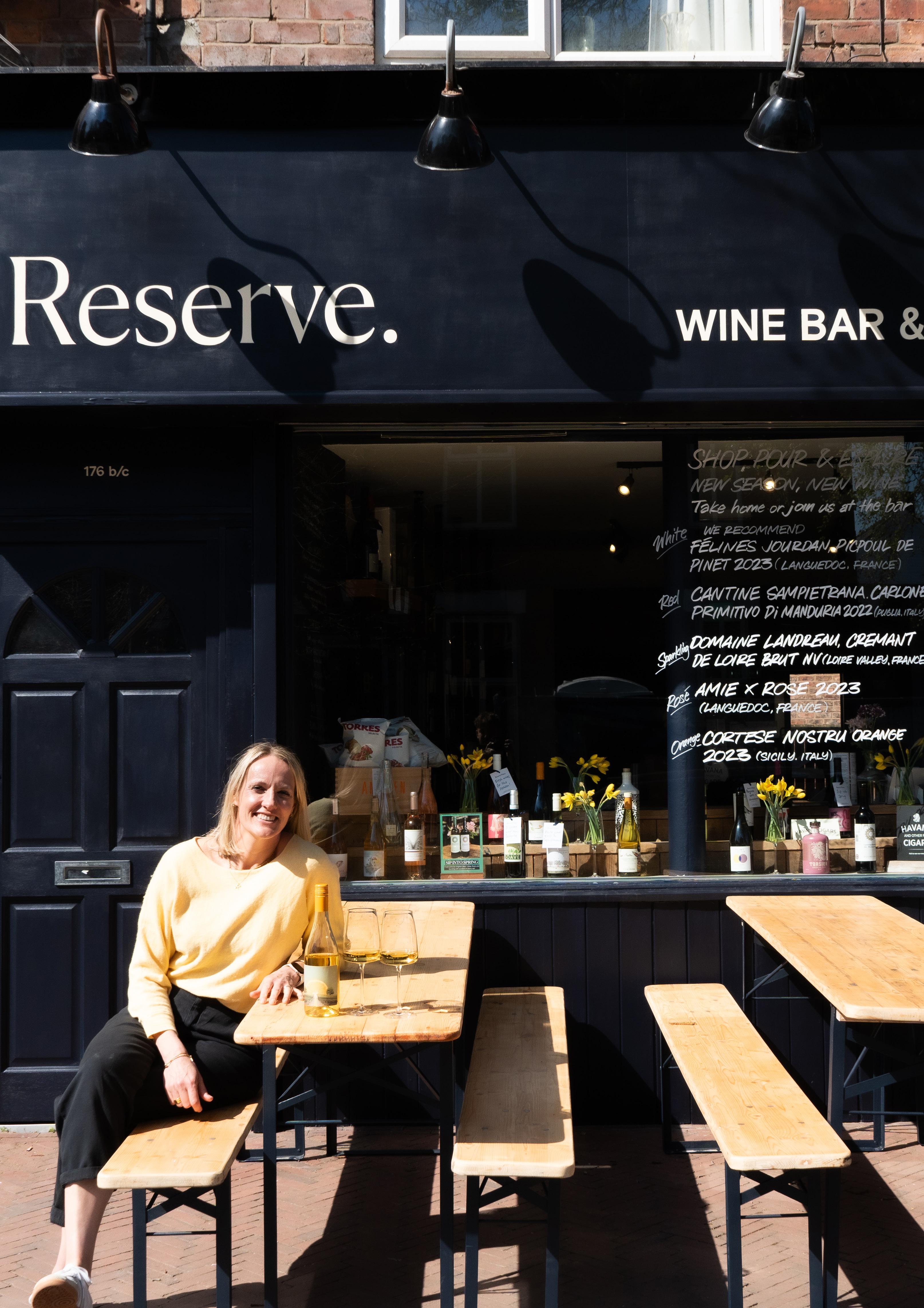
a bit of a journey to get there because being a retailer was just so ingrained.
Will this be a blueprint for other branches?
Yes, I think now we’ve developed this in Didsbury, and we can see it paying dividends, I feel excited because I think, right, OK, that can work somewhere else. We can just be quite creative and a bit more flexible in terms of what we’re offering.
We’re nearly over the line with a new site. It’s an area in south Manchester which is having a lot of investment. There’s a great market there and it has beautiful buildings but it’s been struggling over recent years.
It is maybe a little bit of a risk because that’s not quite where we would want it to be as yet, but hopefully it’s on an upwards trajectory.
It will be a standalone shop like Didsbury, rather than operating within a bigger format. It’s a bigger space so we can do different stuff there and a few more collaborations. We’d like different food operators to come in and build some exciting events around different food concepts because those events and experiences work so well. People really enjoy them and it’s a great way of driving new people into the store.
We should have opened in south Manchester 18 months ago but it’s been delayed because it’s part of a redevelopment site, so it’s not going to be until early next year now.
Meanwhile, we want to spend a bit of time on the website. There’s a lot going on, so we’ll see what happens regarding another site … but I always have an eye out.
Have you made any mistakes along the way at Didsbury?
We've got some stuff wrong, and we’ve had to change a bit of stuff. For example, I put these really gorgeous doors in because I wanted to create a private space. It just didn’t work and we had to take them out again. I was heartbroken about it as they were loads of money.
It is just constant tweaking, isn't it? Looking at stuff and saying, “is that right?

The Didsbury branch offers “a really simple menu that the team can prep themselves”
Can we do it better? Can it be a better experience?” And the team really helped drive that. It is a lot about the people in the sites, and that goes back to recruitment and the right training. Staffing has such a big impact at lots of levels: on your customers, on you, on your brand name. It’s so important to get the right people –because the damage, if you don’t, can be done so quickly.
Reserve at Bents Garden Centre in Warrington is effectively a concession. Are any more of those likely?
It’s been quite challenging being there because it’s purely retail and there’s not the flexibility to do any drinking-in or our own events. We’re quite limited there so we would probably move away from that as a direction.
Are you still importing direct? We are doing more, and that is a challenge
because wholesale is tricky and there are a lot of good operators up here. I would like to do more and more of that but it is just trying to balance cash flow with the volume of stuff you’re bringing in and how quickly you can get through it. I feel a sensible way is to partner with some great UK suppliers as well.
What’s your outlook for the next few years?
We can't compete at the lower end anymore. It’s not feasible, and we can’t make enough money doing that. We want to make people feel good when they come in. If they really enjoy it, they might spend a bit more. We all know that people are drinking less, so if they’re going to drink, let’s give them something brilliant and in a great environment, with some fantastic little nibbles and snacks, so they walk away feeling great. I hope there’s still a place for that.

I’m sleep-deprived, so don’t rely on me to smooth over US-Canada tensions
Iwas lying in bed this morning, wide awake in the broad daylight. It was 3am. My brain wouldn’t shut up: “What the heck am I going go write about in this month’s column?” it said.
“Maybe the fact that I’m now apparently hearing voices,” I replied.
“Stop talking!” said my wife, pulling the covers over her head.
“It’s not me,” I said. “It’s my brain.”
“Well tell your brain to stop talking,” she groaned. “I’m trying to sleep.”
I was going to reply grumpily that I was trying to sleep too, but then realised it wasn’t true. I’d given up on sleep, or sleep had given up on me. Dawn had come an hour before, the sky was already filled with light, and over the hills of Orphir to the north east, the first rays of the actual sunrise were glimmering.
At these latitudes, the sun doesn’t set very determinedly: it merely dips below the northern horizon for a few hours. On clear, cloudless nights such as this it never actually gets dark, and you can easily sit outside and read The Wine Merchant at midnight.
Sometimes the abundance of light feels like a gift. I can be up and active for six hours before I need to leave for the shop. Imagine everything I can get done in such an expanse of free time! Drink two pots of coffee! Prepare my excuses for yawning at customers at noon!
Local folk know to make the most of the long summer days. The guy we hired to paint the shop windows did it at 5am. Gardeners are still out with their trowels
and trugs at 11pm. School holidays start in the first week of July, and the kids roam the streets and beaches for 18 hours a day.
Visitors aren’t used to it, though: it messes with their minds. I hope that’s the explanation, anyway, for some of the bizarre behaviour we’ve witnessed this summer. Last Wednesday, for instance, there was a big cruise liner in, and within an hour of opening I was explaining for the tenth time that, no, Scapa whisky doesn’t come in miniatures. To ease the customers’ disappointment, I complimented them on their matching Canadian flag lapel pins: broad red and white vertical stripes, with a red maple leaf in the middle.

“I love that your flag has a reminder of your national food on it,” I said. “Maple syrup! All flags should feature a food icon. The Orkney one would have a lobster rampant with an oatcake in its claw.”
The couple smiled, and the man looked over his shoulder before saying quietly: “We just want everyone to know we’re Canadian. We don’t want anyone here to think we’re, you know …”
“From south of the border,” added the woman, in a near whisper.
“Now you mention it,” I said, “I have noticed quite a few Canadian flags on hats and jackets this year.”
I didn’t speak quietly enough. From further along the whisky shelves, a louder voice broke in: “You better enjoy those maple leaves while you can, buddy. Pretty soon they’ll all be wearing the stars and stripes!”
The speaker wasn’t wearing a flag, but the Miami Beach Golf Club hoodie he had on was a pretty good indication of his origin.
“Not again!” cried the Canadian woman.
“We’re all just trying to get along and enjoy our cruise,” said the Canadian man. “Why don’t you keep your politics to yourself?”
The Miami man snorted. “Pretty soon your politics are gonna be our politics –when you Canucks become the fifty-first state!”
“Never going to happen,” said the Canadian man, fiercely. “Never!”
His wife’s fists were clenched, and she was quivering with anger.
“If I could just break in,” I said, facing the American. “Can I help you find anything?”
“Yeah buddy, you got any small bottles of this Scapa Scotch?”
After he left (another dissatisfied customer) the Canadian woman said: “We don’t talk about politics on the boat, but there’s a minority of Americans, they think they have licence to throw their weight about and insult us and everyone else.”
They looked genuinely sad about this, and I shared their sadness. Every summer I have many entertaining, enlightening conversations with American tourists. It happens with visitors from all over the world, but Americans tend to be more open than most, more talkative, keener to share their views and enthusiasms than people from other countries.
Usually that’s a pleasure, but this year there seems to be a difference. Things have soured. It must be the endless hours of daylight and consequent sleep deprivation that’s driving them nuts. What else could it be?
Duncan McLean is proprietor of Kirkness & Gorie, Kirkwall


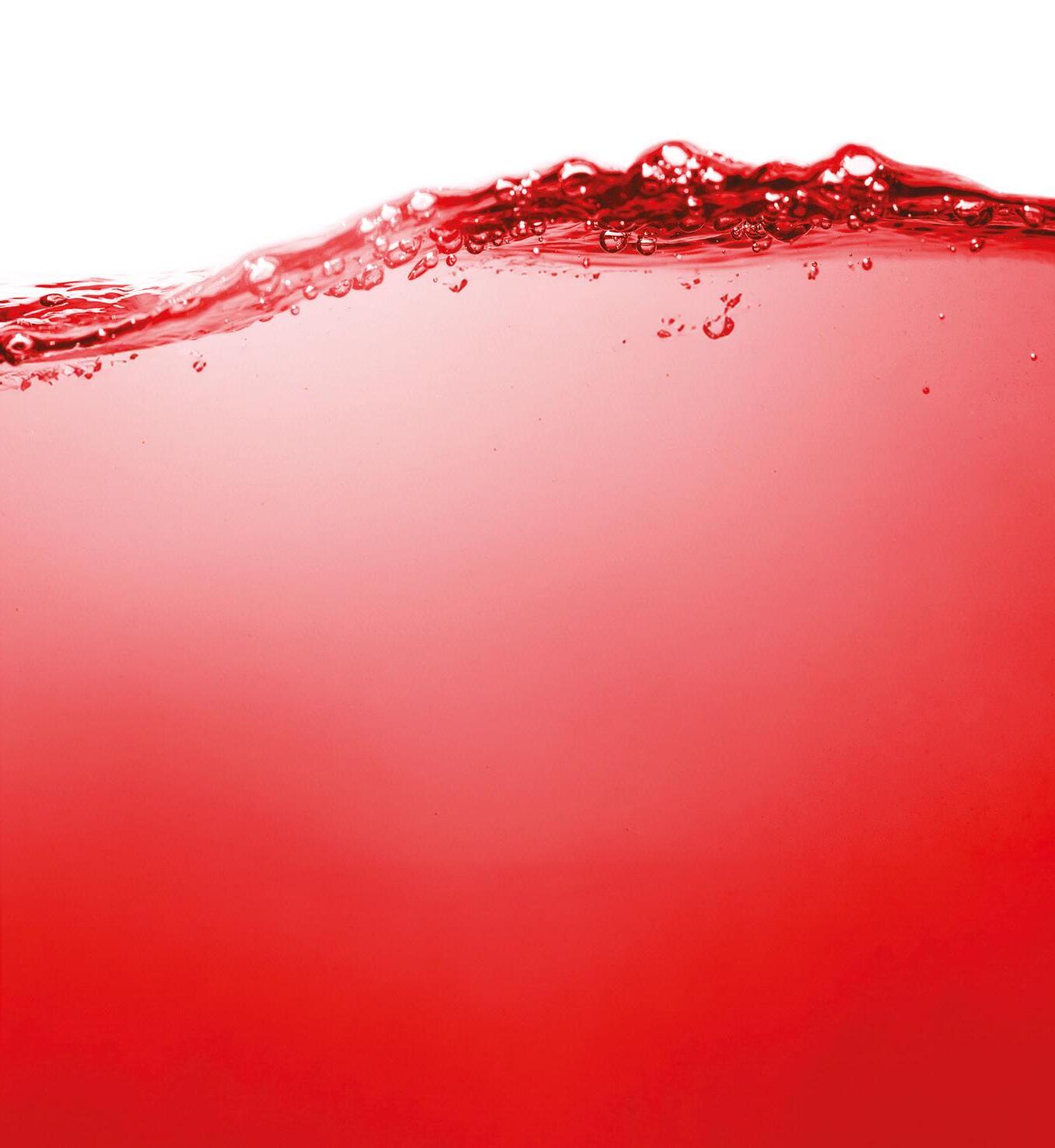



1. Fino sherry is associated with Jerez. But which nearby coastal town is the home of Manzanilla?
2. Why would a wine be called a “cleanskin” in Australia or New Zealand?
(a) It has zero additives (b) No producer is named on the label (c) It’s a single varietal
3. What’s the difference between a bunch and a cluster of grapes? (a) No difference (b) A bunch should technically weigh more than 250g (c) Clusters may contain some unviable berries
4. Which French AOC is thought to be the original source of Viognier?
5. Which Champagne did Jay-Z first endorse and then boycott?
nswers on page 23


by Brett



Enzo Cucchiara was learning about sales before he could walk. His mother, Melina, would bring baby Enzo into her antique shop while she was organising the display. “I’d literally sit him in the window,” Melina laughs. “Tourists would just point at him and take pictures of him crawling around.
“Enzo grew up listening to me do deals and, when he was old enough, coming out to do deals with me. Obviously wine is a different thing to jewellery and antiques but we both grew up with wine because my father used to make it.”
Melina established Moreton Wine Merchants in 2020 and although she could always count on Enzo to help out, he was heading for a career as a rugby player. Since his association with Wasps came to an end, the 20-yearold has thrown himself headlong into the wine trade and has been working full-time for the business since August 2023.
“Nothing fazes him,” says Melina. “He’s learning more and more about the wines all the time. He’s got his WSET Level 2 and he’s looking at Level 3. He’s a natural sales person because he’s grown up with me and business in one form or another. We have a lot of fun at work. There’s a lot of banter.”
“I always did part-time shifts whenever she needed help on busy nights,” says Enzo. “It got more regular as I got older and then one of the staff members left and I ended up going full time. She’s my mother, and I love her, so I kind of just fell straight into it.
“I like the selling. I also like the socialising and meeting people. The best feeling is when you’re talking to a customer and you find something that you think that they’ll like, and they come back and tell you that they really liked it. That feels like you’ve done a good job.”
Enzo says he probably has the ideal personality for a career in the wine trade. “I’m a very sociable person. All my friends say that I’m the most confident person they know,” he says. “Working here and sometimes being on my own, it’s not like you can ask someone else to do things for you. If you want to make the sale, you are the only person that can make that sale.”
Events are also something that Enzo enjoys. “We did a pizza night a couple of weeks ago. I planned

it completely. I did all the advertising, did all the social media, sold the tickets and made the pizzas. I’ve planned our Greek tasting too. I’ve spoken to the suppliers and chosen the wines. I’ll plan how everything will unfold, step by step, on the night. I quite like that, when you know you have a plan in place and it works out nicely.
“I definitely see myself staying in the business and eventually taking it over. I still have things to learn: I mean, I know I can run the shop on a busy evening, but behind the scenes, that’s the bit my mum’s very good at and I haven’t learnt that yet.”
A native Sicilian, Enzo has an affinity with Italian wines. “Italian and Sicilian wines are so good just because they’re so diverse,” he says. “Frappato is my favourite grape. It’s light, fresh and fruity, and you can have it with food or on its own. Or you can have a heavy Brunello or Amarone. Obviously I’m heavily biased, but Sicilian wines are amazing.”
Enzo wins a bottle of Barone di Villagrande Etna Bianco DOCG courtesy of Marcato Direct
If you’d like to nominate a Rising Star, email claire@winemerchantmag.com


Richard Sadler BIN93.UK,
Ipswich
Favourite wine on my list
Top of my list is Bodegas Santalba Natural Rioja Alta. It has chewy tannins and mouthwatering acidity alongside the perfect minerality and an intense vibrant fruity character. I just love a glass at the end of the day.
Favourite wine and food match
I really enjoy a Ca’Bianca Gavi with my favourite: oysters and lobster. The stylish and delicate stone fruit and melon aromas with floral notes in the wine are the perfect accompaniments to wash down the seafood.
Favourite wine trip
The Budapest Wine Festival is a great opportunity to taste award-winning Hungarian and international wines, Champagnes, Cavas and discover local gastronomy. Or to just relax and admire the fantastic view from the terraces of Buda Castle. Set in the beautiful surroundings of the Royal Palace, it’s just the perfect place to meet wineries and taste their fantastic wines.
Favourite wine trade person
I really admire Annie Wright from G & G Gallo Enterprises: she always brings something new to the table.
Favourite wine shop
Wine Boutique on the Quay owned by Julien Jourdain. His location at Ipswich Marina is perfect to enjoy wine and a cheeseboard. He stays open an hour later than I do so I can join him for a glass when I close!
Aldi has become the first UK supermarket to introduce ultralightweight 300g wine bottles across its range, as part of a major packaging reduction initiative.
Working with Greencroft Bottling and its wine suppliers, the discounter says it has reduced the weight of 20 million still wine bottles from an average of 409g to just 371g this year.
According to Aldi, the changes are the equivalent of removing 12.7 million empty bottles from circulation annually. Grocery Gazette, June 27
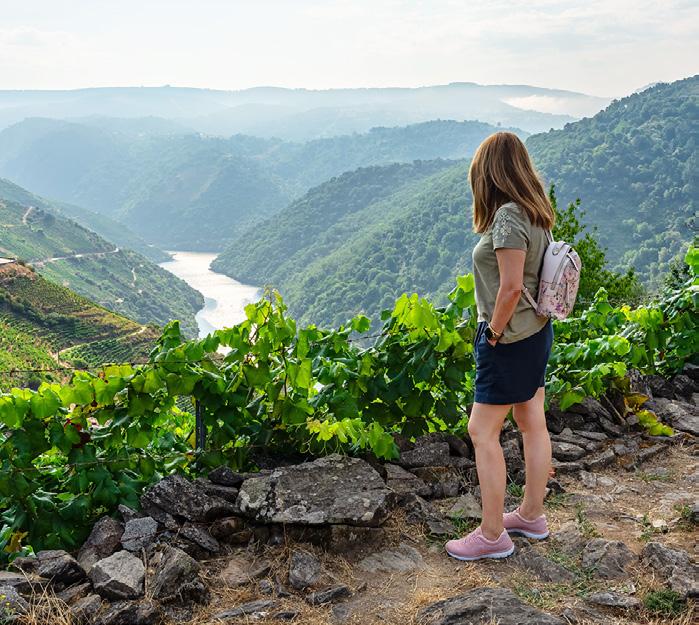
‘Foreign’
The Xunta de Galicia has approved DO Ribeiro’s request to add the traditional grape varieties Merenzao, Espadeiro, Branco Lexítimo, and Albilla do Avia to its list of principal grapes and effectively phase out so-called “foreign”’ grapes Palomino, Garnacha Tintorera (Alicante Bouschet) and Tempranillo over the coming years.
Although the occasional replacement of vines in pre-existing vineyards will still be permitted, the vetoed varieties may no longer be used to establish new vineyard sites.
Decanter, June 26

Last year the United States represented almost a quarter of Italy’s overseas wine sales, making it the country’s largest export market. But due to America’s flip-flopping tariffs, Italian producers are now stuck in a kind of purgatory.
Nunzio Castaldi, president of New York-based wine importer Panebianco Wines, says: “The industry is essentially in a holding pattern awaiting Washington’s next move, with US wine businesses caught between bursting warehouses and the threat of a price shock that could send everyday Italian wine off US shelves entirely.”
If a solid agreement is not reached in July, warns Castaldi, then “the US wine trade faces a summer of 50% duties as announced already by Washington DC. That will be devastating.”
The Drinks Business, June 25
London Gatwick is celebrating English Wine Week by offering passengers a taste of the south east’s finest wines.
World Duty Free stores are showcasing wines from Ridgeview, Gusbourne and Chapel Down and several restaurants and bars in the North and South terminals are serving wines from Wiston, Loxwood Meadworks and Fitz.
Bolney Wine Estate will also be welcoming arriving passengers with tastings and information about its vineyard tours.
Sussex World, June 27

Channel 4 has partnered with Laithwaites for a new branded content series set to run on its vertical video food and drink social platform, Channel 4 Served.
The series will see wine writer Aleesha Hansel challenge social media star Tyler Butt to create a variety of meals inspired by a different wine each episode.
James Morrison, head of brand at Laithwaites ,said: “We’re thrilled to be the first brand to partner with Channel 4 Served. This series is fun, fresh, and captures exactly what Laithwaites is all about.”
Marketing Beat, June 27
The sale of billionaire Bill Koch’s wine collection has set a $28.8m record for a single-owner wine collection sale in North America, says seller Christie’s.
Part of his collection was sold in a threeday sale in New York, an auction billed as a once-in-a-generation event for wine collectors.
The most valuable lot was a methuselah of Romanée-Conti Grand Cru 1999, which sold for $275,000.
Just Collecting News, June 26
Answers to questions on page 20
1. Sanlúcar (or Sanlúcar de Barrameda, to give it its full name) 2. (b) No producer is named on the label
3. (a) No difference 4. Condrieu 5. Cristal
More than 200 workers at a glass filling and distribution company in Bristol are to go on strike in a dispute over pay.
The employees of Encirc bottle wines supplied to most major supermarkets. The union Unite said there was “no doubt” the move would affect supplies across the summer.
BBC News, June 18

Jeff and Alexandra Cohn
Sonoma winemaker Jeff Cohn, a top producer of Zinfandel and Syrah, is closing down his winery, Jeff Cohn Cellars, after the 2024 vintage.
Cohn and his wife and business partner, Alexandra, said it was time to move on after nearly 30 years.
It’s the latest in a series of wineries simply closing shop amid tumultuous times in the wine industry. Selling the winery seemed a longshot, considering how many wineries are reportedly for sale in California. With the industry in flux, potential buyers are holding off, particularly on smaller wineries.
There is also a glut of wine in the state: many growers left grapes unpicked in 2024. “We get random emails and calls all the time from growers looking for a home for their fruit,” said Alexandra. Wine Spectator, June 27
By WSTA chief executive Miles Beale


Lower EPR fees are still bad news
The long-overdue confirmation of the fees for the Government’s waste packaging tax scheme is a blow to the drinks trade.
DEFRA had previously announced a provisional EPR fee for glass of £240 a tonne. The final figure has dropped to a £192 per tonne, further undermining business planning.
The WSTA argues that the revised fees are still extortionately high for glass, which the industry says is likely to encourage producers to switch from highly recyclable glass to more environmentally damaging forms of packaging, as non-glass containers are not subject to any EPR fees. We are urgently calling on the Government to delay EPR and review the methodology for fee calculation.
Modulated fees have been confirmed for year two of the scheme (2026). Packaging classified as red [as opposed to amber or green] will increase incrementally 1.2x in 2026, 1.6x in 2027 and 2x (double the base fee) in 2028. There is no time to avoid these fees for products sold this year. This is especially impactful on SMEs and importers who need time to make changes and may not have revenues to cover these unknown costs.
These hefty EPR fees are eight times higher than in Germany, and three times more than in Croatia or Finland.
This news is another blow to the sector, which is already reeling from consecutive duty hikes and whose margins are already tight. Having to pay the highest EPR fee for glass will force businesses to pass the costs onto consumers, pushing up inflation while – perversely – encouraging the use of cheaper and less sustainable packaging alternatives.
Drinks producers and retailers are frustrated that DEFRA refused to delay introducing the scheme in April, even though it has acknowledged there are still major issues with the scheme, and even admitted that it won’t improve recycling.
The promise to exclude hospitality waste, which is disposed of via private waste collections, from EPR has not been delivered either. Unless the Government intervenes, most hospitality waste will be unfairly charged EPR.
DEFRA expects 85% of businesses to raise prices because of EPR, but the WSTA believes that the number of wine and spirit producers forced to put up their prices will be greater. Find

Bordeaux Wine Month returns this September for its eighth year. With 99% of last year’s participants reporting an uplift in sales, it is one of the wine industry’s most successful promotions. We spoke to two wine merchants who took part last year to get their take on what makes Bordeaux so special and why Bordeaux Wine Month is such a great initiative to be part of.
Published in association with Bordeaux Wines
Alice cooper
Portland Wines (Sale, Hale and Marple)
What do you find most interesting and exciting about Bordeaux wines?
The diversity in styles is really interesting and something that I think a lot of people don’t realise is available. There is a big opportunity to be able to offer something different for people to try.
What kind of activities did you organise for Bordeaux Wine Month?
Julien MérignAc
Vino, Edinburgh
What do you enjoy most about Bordeaux?
Personally, I really like the white dry wines – I’m enjoying Château LamotheBouscaut Pessac-Léognan Blanc just now. In a professional capacity, I like to taste the difference between all the different blends. I currently enjoy the “dark” influence of Petit Verdot in Château Mouras, a Graves. Also, I like to champion lesser-known appellations with our customers: Castillon, Côtes de Bourg, etc. There are lots of good quality and great value wines around.
Château Mayne-Vieil Cuvee Alienor Fronsac is our best-selling Bordeaux just now.
What was on your agenda for Bordeaux Wine Month?
We had four different wines on tasting every weekend, plus four fine wines in our Enomatic machine. All wines were on offer for the duration of the activity and we also had two mixed cases for sale. We tried to mix things up by offering leftfield choices
We had a series of in-store tastings, including a full range in our Wine Emotion machine at Hale, which went down really well; and some tutored events including one for a local wine society. We ran in-store promotions across the range in September. Consumers are discovering that there’s far more to Bordeaux than the worldfamous châteaux. This was what was so great about Bordeaux Wine Month: we were able to show people something different to what they were expecting when they typically think about Bordeaux. It is
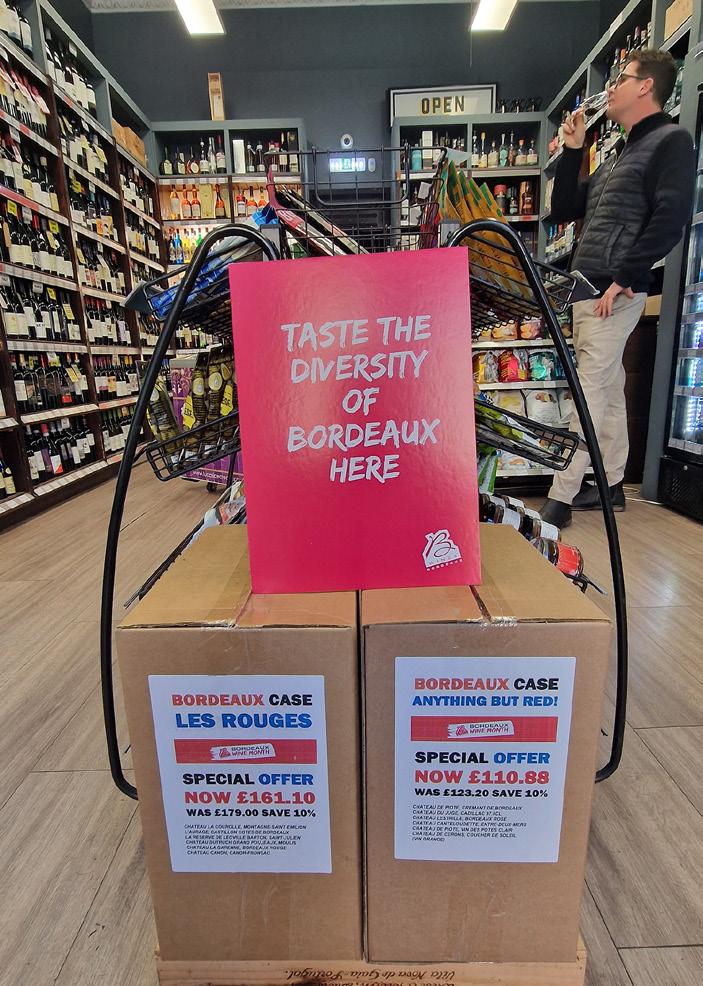

really interesting to see people’s reaction to things like crémant and white Bordeaux.
Would you recommend getting involved to other merchants?
Absolutely – and I have already! We had a really positive sales result and some interesting new listings. We definitely felt like our customers took a lot away, trying wines that they wouldn’t normally look at and getting better insight into Bordeaux as a region. It was a great way for the team to learn too. We all took a lot from it.
including a rosé and a crémant. We ran an incentive for staff and had fun promoting the leftfield choices on social media.
Are consumers venturing beyond the big-name châteaux?
Slowly but surely. People buying Bordeaux for a present are hard to reach, but people buying for themselves are more willing to listen and experiment. The cost-of-living crisis has also had an impact: people are now more willing to try less well-known appellations as well as wines from the more famous estates.
From a store standpoint, what were the best things about the promotion?
Scan the code or visit bwm.cubecom.co.uk to sign up for 2025

Taking part in Bordeaux Wine Month gave both our staff and our customers the opportunity to challenge their preconceptions of Bordeaux wines. We’ll be taking part again, for sure.


could manage: Taboo. Not just Taboo, but Taboo and orange and cordial.
The kids might not be drinking much wine, but neither did we. Remember?
Doomed, we’re all doomed! I’m not talking about the impending mutual destruction brewing in far too many parts of the world, but more the fact that young people don’t drink alcohol and just want to enjoy mushroom juice. I may be taking a slightly drastic view of a story that appeared in The Times but, given that booze is our business, it does cause concern that there may be no future drinkers once the current batch have drunk themselves to death.
Apparently “young adults” are switching from alcohol to “functional health drinks” which are full of vitamins and healthy gut bacteria and bits of fermented cabbage. A lot of the research, and the basis for these “facts”, came from Waitrose, which means I have to take it with a big pinch of salt. Because last year The Times ran an article about how everyone was drinking cold red wine, based solely on a report from Waitrose about higher-than-normal sales of red wine over summer. I love a chilled red wine, but the sole reason Waitrose sold more red wine last July and August was that there was no bloody summer, and drinking Provence rosé in an igloo is weird.
This whole not-drinking thing is blamed squarely on Generation Z. If you’re as confused as I am by the various generations, then Z are born between 1997 to 2012, so it’s hardly surprising that so few of them are drinking. A large chunk are still at school. If you’re now thinking, “being at school never stopped me drinking”, then that’s kind of the same reason that there’s no need to worry too

Arch 6 Fungal Frappé, coming soon
much about Generation Z’s drinking habits causing you future financial ruin.
If I think back to those hazy days of my mid-to-late teens and early twenties, I was very happily going out and drinking, but I never once had a glass of wine. It was Timothy Taylor’s in the pub with my dad, Sol with a wedge of lime in the bottle when out with mates, and if it got to the point where everyone switched to shorts then I went for the only thing on an optic that I
Sugar is the magic ingredient when you’re younger. It wears off –then a whole world of flavour becomes available
I’m surprised I didn’t drink myself into a diabetic coma. You see, sugar – that’s the magic ingredient when you’re younger, from sweets to alcopops to cocktails to root canal work. Eventually the magic of sugar wears off, then a whole new world of flavour becomes available – and wine is there for you just when you need it most.
The point is that what you drink when you’re young, and just starting your climb up the drinking ladder, doesn’t define your later drinking habits, so I don’t really think there’s much to worry about. We’ve managed to reach a point where consumer awareness about wine is at an all-time high, where there has never been a more interesting and diverse wine trade, wine offering or access to wine.
Plus, if this generation is so busy looking after themselves then maybe they’ll be wine drinkers and customers for even longer. In the meantime, one of the benefits of having a wine shop in a railway arch is that the dark, slightly damp spots are perfect for cultivating mushrooms. I’ve just got to turn it in to healthy mushroom juice. I’ll happily cash in on any trend!
By the way, I did my own research for this article. Bridget and I have five children between us and they range from 29 to 17. The eldest loves a glass or two of red wine at home with dinner or whilst reading a good book. The 27-yearold doesn’t drink at all; one of the 20-yearolds is a farmer and very much enjoys his real ale. The other is at university and seems to find vodka-based pres on a weekend make for a much more interesting night out.
The youngest is the only one still at home. The other day, whilst we were out doing a tasting, he sent us a text asking if he could have a glass of the Champagne that was open in the fridge as he thought it would go well with his frozen pizza. As a great philosopher once said: “I believe that children are the future.”
Rob Hoult owns Hoults Wine Merchants in Huddersfield

Jacob Stokes meets Rodrigo Soto, now living his best life making Far Mountain wines in California’s Moon Mountain AVA
When Rodrigo Soto and his wife
Mai Errazuriz left California in 2012, they thought it was for good. “After six wonderful years working in Sonoma, we closed the chapter beautifully and moved back to Chile, I was convinced we would never come back,” says Rodrigo. But in 2018, when the opportunity arose, Rodrigo and Mai jumped at the opportunity to return, this time with ambitions of starting their own project.
“I always represented important, familyrun businesses in my career, and I learned a lot from them, but for obvious reasons, as an employee, there’s always a script to follow. Even though I took pride and
pleasure in putting my own mark on those scripts, there comes a time where you just feel you have to progress and create something for yourself. It’s important in any profession to keep evolving. And at a certain point I realised it’s better to take a risk and have a bit of fear than to live with regret.”
California?
In California, you don’t need to own land or a winery in order to create something special. Instead you can rent a space through custom crushes and have serious relationships with growers for high-quality fruit. It means that you can build a project
with solid roots without having to invest all of your resources at once. This, in a sense, is the beauty of the American mentality. California has all the services available to facilitate start-ups and entrepreneurship.
What’s the ethos of Far Mountain?
Right from the beginning it was always about places, not people. Of course people are important, but they should never be the protagonist. For us Far Mountain is about old vines, altitude, biodynamics and dry farming.
There’s also an idea of rediscovery. We aren’t pioneers: people made wine in these places before us, but we are re-
engaging with vineyards that have been underestimated and looked down on. We have changed the lens and re-interpreted what these places can offer, which is wine that really connects with its source –something that’s not always necessarily the case in the new world.
You work biodynamically. Where did that journey begin?
My introduction to biodynamics was totally by chance. I studied agronomy in Chile and was allocated organic farming for my thesis. This, of course, in the late 90s, was when organic farming was considered to be for the hippies. It wasn’t taken seriously.
But it was during the research that I had my major existential crisis: everything I was reading contradicted the last five years of my studies. Whilst organics was all about working with nature, all we had learned at university was to eliminate the host, eliminate the problems and everything else around you until nothing bothers you. This is when I realised that I had to re-think everything I had learned. Then in my first professional role at Matetic, I was part of the project that brought biodynamics to Chile for the first time.
Tell us about dry farming and old vines.
I thought I had seen everything in farming until I found the vineyards that we use for Far Mountain. Having a dry-farmed vineyard at these high elevations really surprised me, at first. I didn’t know how it could be possible with such a warm Mediterranean climate.
But it’s possible because of the old vines in heavily decomposed basalt soils. The vines dig deep into the fractured volcanic rock for minerals and water, with larger rocks also creating a layer of humidity and moisture underneath too.
Today with climate change, you need a gearbox that really works, and old vines have that in their system. No matter the extremes of a vintage, you get a level of consistency and concentration that’s impossible with younger vineyards. Old vines are the best at showing the real personality of a place.
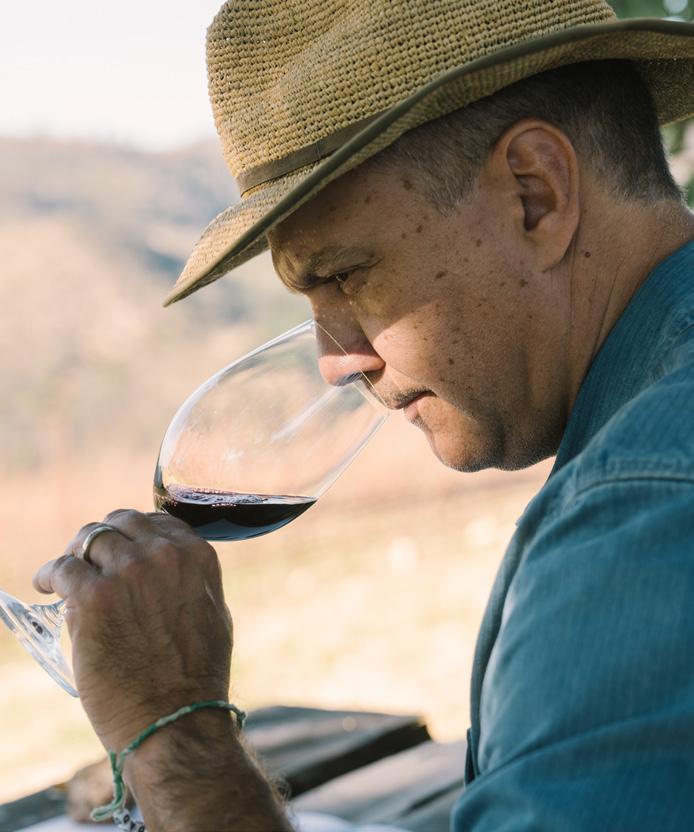

“This comes from the Bald Mountain property. It’s at 1800ft, which for the region is very high. The vines were planted in 1972 and have been dry farmed from day one.”
In this wine, flinty golden apples and pear skin flutter around mellow oak. There’s a rich generosity on the palate entry that darts almost immediately into a pulsating line of salt-etched citrus and crushed rocks. Gushes of lean, saline acidity flood the mouth as whispers of vanilla and pear phase in and out on a long, tense finish.
“The Alta Vista property for this Cabernet is also a dry-farmed vineyard from the 70s. And it’s planted with terraces that you would maybe expect to see in Galicia or the Douro, but not in California. It’s inspired by how the old-timers would plant vineyards following the topographic lines, and it makes a lot of sense,” says Rodrigo.
“The Moon Mountain AVA is an excellent place. Of the 17,000 acres in the AVA, only 1,500 of it is planted to vineyards – the rest is a wild, rugged terrain of forests and rocks,” Rodrigo adds.
Like the Chardonnay, there’s a verticality and poise to the wine that feels far detached from Californian stereotypes. There’s real freshness and crunch with blackcurrant leaf, stone-smashed blackberries and mountain brambles coiling around a core of sea salt, cedar sap and graphite.
Sponsored feature
Far Mountain wines are imported by Liberty Wines
Find out more at libertywines.co.uk



The first, and most obvious, observation to make about Soho Wine Supply is that it’s not actually in Soho. It’s in Fitzrovia. But that wasn’t always the case.
The original store was founded in 1890 in Soho Street, which is where it remained until the Luftwaffe had its say. The shop’s Italian owners mercifully weren’t there during that particular episode of the Blitz: they had been interned. They were safe, in a way, but the building was reduced to rubble, and the business relocated to Tottenham Court Road, half a mile away to the north.
There it remained until the landlord, EMI, decided to redevelop the site to create what is now the Odeon cinema. And so, in 1977, Soho Wine Supply moved to its third location, just around the corner in Percy Street, in premises it had previously utilised as a warehouse.
Soho Wine Supply was bombed out of its original premises, and its second site was torn down to make way for a cinema.
Life in Percy Street, which links Tottenham Court Road with Charlotte Street, has been less tempestuous. But there are still challenges to be faced, including the hollowing-out of central London’s residential base, fewer workers in the area – and a squeeze on consumer spending.
Graham Holter calls in to see what the mood is



Klitos Sotiri, a Greek Cypriot who had been working in the business, was by this point its new owner. His young sons, Kyri and Peter, helped out during school holidays and at weekends.
A second shop opened in Muswell Hill in the 90s, but the introduction of a red route in the area –coupled with some health issues for Klitos – meant that business was again consolidated in Percy Street.
Klitos has long since retired, but today Soho Wine Supply is run by the sons whose wine careers he helped get underway in the 70s. Peter is managing director, overseeing a company that achieves the majority of its turnover selling to on-trade clients in central London, while Kyri looks after the retail side of the business.
Cambridge graduate Caitlin Farrell, who recently joined the company, has the job title of wine advisor and sales facilitator.
What’s the customer base for the shop? Do many people live locally?
Peter: Mainly corporates; businesses. There are some residences around here. A lot of people have got Berry Bros accounts and things like that, because they can afford to live in the West End. We’re doing 80-plus percent wholesale, which keeps us alive, because the retail has significantly dropped since Covid due to people not being in the area.
Online has picked up. But it’s very small. About 4% of the business.
Does it feel like London has changed completely in the past five years?
Peter: I think the attitude to work has changed completely. But we’ve got a new business coming here – just yesterday we saw people going in across the road. That building had been a white elephant since Covid: they decided to refurbish it, 13 floors, and I think only three have got occupancy. But the new business has about 500 theoretical employees, three days a week, or whatever. It’s an international property manager.
You’d assume those people are going to want to buy a nice bottle of wine or spirits fairly often. Caitlin: Yes. And then things like corporate gifting, or wanting to celebrate something with their team.
Peter: There was a media business there, pre Covid, and they used to spend a serious amount of money just having Friday drinks and entertaining clients. There’d always be like a beer, a white wine, a red wine … for the Fourth of July they’d maybe put an American wine in or something along those lines.
All things being equal, would you like to continue to operate the business from this site?
Peter: We had this nostalgic conversation a few years back when the lease came up from renewal. There’s so much history here, there’s so much of us here, it’s very difficult to find another way.
We looked at wholesale-only, because it’s such a big part of the business. Our business is very service-led. I mean, we’ve often had same-day jobs go out to people because they’ve got a client in a five-star hotel that wants a bottle, or a function’s suddenly happening, or occasionally they’ve been let down by another wholesaler who happened to be a few pennies cheaper on the spreadsheet.
That’s when clients see the real value of their suppliers.
Peter: The individuals do, but accountants don’t. That’s just how business is.
Is the shop essential, or just a nice thing to have?
Peter: The essential part for me is the range that we can offer on the back of having a shop. It gives that broadness of portfolio as well. We’re independent, so we try and sell what we like at the retail level.
Caitlin, how did you get involved in the business?
“The essential part for me is the range that we can offer on the back of having
a shop. It gives us that broadness of portfolio”
Caitlin: I did an English degree, but was always interested in wine, and was president of the Peterhouse Wine Society for my college. So I was presenting tastings and really enjoyed it. When I graduated, I went into a corporate consulting role, but did my WSET Level 2 just for fun. And I also had an account in my corporate job with a big gin and whisky producer and that, combined with my WSET, made me think, actually, this is what I want to do. So I left and came across Soho Wine by a happy coincidence. I walked past it one day when I was in the process of applying for jobs in wine, and I came in and asked if there were any positions available. And here I am.
Peter: In fairness we’d been looking for a while, just to find people that are willing to work, to be honest. One young lad I’d been talking to kept saying, “I can do that from home”, and we were concerned at that time about the changing of duty according to abv. That requires being analytical, physically looking at things and writing down notes. You can’t do that from home. It’s been a big project for us.
How much wine do you import yourself?
Peter: Well, we were importing ourselves, using two big companies to bring stuff in, and we’re with Vindependents now.
It was the Brexit situation that made it so much more difficult to move stock around, especially small producers and smaller volumes. And with Vindependents, it gives us that logistical solution where we can just order 20 cases of something every three months instead of a pallet that we sit on for a year.
We’re feeling our way through the portfolio. Some things we like; some things work better than others. Some things we like, but don’t work.
What’s your average selling price for a bottle of wine in the shop?
A previous incarnation, drawn by
Tas Kyprianou
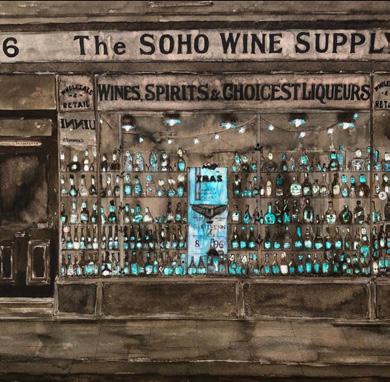
Peter: I’d say it was £25-ish at one time. It flutters up and down. £20 is sometimes sweeter now than £25 and that’s probably down to the cost of living.
What kind of margin do you aim for?
Peter: On wine, we want 35%-ish at the moment.
That’s not excessive for central London.
Peter: It’s not but when you’re working secondary, if you’re buying a wine from Liberty, or someone like that, they’ve already got an infiltration out there, so

your margins are normally subdued. We work quite well with people like MMD and, again, we sell the wines at a lower, slightly lesser margin, just to be competitive.
What kind of Champagnes do you sell?
Peter: As far as brands go, we work very closely with Deutz, who are sponsoring the window at the moment. Bollinger promote frequently, so it’s an easier sell. We work with Pommery on the ontrade a bit and like some of their products, but it’s difficult to retail. Pol Roger’s a favourite. Germar Breton, from the Vindies, is very good for the price.
How do you keep up to date with what wines are worth investigating?
Peter: Kyri has been out to Australia and New Zealand a couple of times and has a passion for it,
“We went to Wine Paris, which gave us a good start for the year”
and has found some things that he loves. But I think the demand for Australian wine has changed. It’s not what it used to be.
We tend to look at our existing supply chain first of all, and if there’s nothing there, then we look beyond. We like a lot of the Milestone wines and we’ve taken a couple of premium ones. But it’s not the sort of wine you can buy 120 bottles of at a time, you know? So it’s always a case of trying to find something you can bulk your orders up with.
We went to Wine Paris, which gave us a good start for the year.
Is everything in the shop available to wholesale customers?
Peter: Yes and no. I mean, it’s available unless it’s allocated. Things like Puligny-Montrachet you can’t even put on the shelves these days. One of our
jobs this summer is to make the list more concise.
Caitlin: We want to give people a sort of truncated selection so it’s a bit more comprehensible. The range at the moment is so big.
Peter: Yeah, it gets confusing. You’re better off having focus points and working around those. I went to see a client recently; he wanted to change some wines. I pitched up with three wines, having looked at his list, and I think he was pleasantly surprised. And he listed all three. One was a Pinot Gris from New Zealand. I said, you don’t have Pinot Grigio by the glass, which I understand. Why don’t you put this on by the glass? That was about two months ago and he’s done about 120 bottles. So we’re very pleased.
We know that hospitality is suffering everywhere. I guess you would imagine less so in central London?
Peter: I would say more so.
Caitlin: A lot of our clients are catering to high-networth individuals from abroad, and these kinds of people are just not coming to the UK as frequently as they used to. It’s not as beneficial, tax-wise, if you’re shopping. They’re in Paris or Dubai or wherever instead. So a lot of our clients who rely on these heavy hitters have found that things have been taking a downward turn. People are just not there. And, generally speaking, places just are not as busy. People are buying one cocktail instead of two, that kind of thing.
I think BYO is really trendy in London at the moment: that’s something that I see a lot of influencers posting about. We’ve had lots of people come in here and ask for wines that they’re taking to a BYO.
Are there more BYO places in London now?
Caitlin: It’s confusing because a lot of restaurants sometimes do BYO. Hawksmoor’s launched a thing where Monday is free corkage. So a lot of places, I think, are branching out.
Peter: A lot of people do, if you ask the question. We had an American customer who was going to Beast. He said, do you think they’ll let me take my own wine? I said, I doubt it, but you can only ask them. He phoned them from here and they said they wanted £70 corkage. So he bought a nice £200 bottle of wine, and paid £70 corkage, for a wine that he would have paid £500 or £600 for there.

Kyri, Caitlin and Peter –and a Deutz-sponsored window display
“BYO is really trendy in London at the moment –that’s something that a lot of influencers are posting about”
So, yeah, if you ask the question, there’s probably a lot of people do allow you to do BYO, but there’s a hefty corkage.
Do you sense that social media is encouraging people to seek out cheaper wines now?
Caitlin: I do think a big factor is people just don’t have any money. I think if people had more money, they probably wouldn’t be doing that. So that’s the ultimate driver. But yeah, I think people get a kick out of a bargain, and also out of an unusual wine.
Something that some of the big supermarkets have done is take on some quite rogue regions and that’s been helpful, because sometimes I’ve noticed people are quite attracted by some of our more unusual prospects. So they’ll ask for stuff like, you know, orange wine, Georgian wine, natural wine. It’s not the central part of our range, but it is there. I think sometimes it’s less that it has to be cheap, and more that people feel they’re getting something more unusual for their money.
I do think that, on the whole, wine influencers are doing a lot of good, because they’re
encouraging people to think about wine and learn about wine and to have wine opinions.
People now have terms for what they like and what they enjoy.
What about your personal tastes? What would you grab from the shelves to take home tonight?
Peter: Usually Burgundy but currently I’m quite into my aromatics. I like a good dry Riesling. Clare Valley; some of the Australian stuff’s good. I’ve always liked The Contours from Pewsey Vale. Kyri: Basically, Pinot Noir, Chardonnay and Riesling as well. I tried Curly Flat Pinot Noir with the winemaker in 2010 in Australia. It’s one of those big, punchy, herbal, ripe cherry sort of Pinots. And Chardonnay from all over the place, really. So Mornington, Western Australia, the Yarra; California … some of the South African ones are a bit hit-and-miss with me, if I’m honest, but I do like some of those as well.
Caitlin: I’m a great lover of Riesling. That was my first favourite wine. I’m particularly interested in the new world, like South Africa. But I’d say my heart is in sparkling and fortified. I’m a big port and sherry fan. I love Champagne but I also love sparkling from elsewhere.
Have you noticed more customers cutting down on alcohol or switching to non-alcoholic versions of drinks you sell?
Peter: We respect people’s opinions. But if they want a wine that’s non-alcoholic and tastes like a wine, that’s very difficult. So if you like wine, drink wine; you don’t like wine, maybe find something else to drink.
There’s a lot of investment gone in, a lot of research, and there’s a decent product out there. But we tried something non-alcoholic from Provence and the producer wanted to charge us more than we’re selling their standard wine for.
We’ve started with the guys down at Balfour with Wild Idol. It’s never had alcohol in it so it’s very different to the de-alcoholised wines. It’s drinkable. No, it’s not just drinkable, it’s very, very nice. But it doesn’t have the same impact, and it doesn’t have minerality and depth of Champagne.
You don’t seem to have gone overboard with security. Do you have any issues with theft?
Peter: We have a very good intruder alarm. And we’ve got a shutter that comes down at night.
“Shoplifters go into the big supermarkets and they don’t get challenged at all, so they think they can do it here as well”
Kyri: The number of people trying to shoplift has increased from what it used to be. You’ve got to keep your eyes open. Because they go into the big supermarkets and they don’t get challenged at all, they think they can do it here as well. We had two incidents late last year, and it got physical as well.
Caitlin: We work quite closely with our business improvement district, the Fitzrovia partnership, and they’ve been keeping us up to date on what’s going on with shoplifting and stuff.
Peter: I’m in a WhatsApp group with a few other merchants because there are people that go around, and they’re obviously professional, looking at particular wines.
What sort of experiences have you had with couriers?
Kyri: I’ve been through a whole range of carriers. We started with Parcelforce because their customer service is very good and their completion rates are pretty good. They’re a bit more expensive than some of the others. But a couple of years back, they went on strike for a couple of months. So we decided to try DPD. Things I was sending out on the 24-hour service were taking two weeks to get there. We would have been better off sticking with Parcelforce.
Peter: If we want a local distributor, we can find someone. But online, you’ve got to cover every corner of the UK, so you’ve got to have someone that’s got that much infiltration. When you use APC, they subcontract things in certain areas, so they’re not in control all the way. So it’s very difficult.

What would you like to do next with the business?
Peter: With the economy the way it is at the moment, I think we’re going through a bit of a storm. So it’s about battening down the hatches just to get to the other side in a healthy state. What we are trying to do is grow organically with the people that we know and trust.
Retail-wise, hopefully there’ll be more people in the area. There’s the building here that’s just been occupied; there’s a new-build here that’s going to open up soon. God knows how long it’s going to take to get people in there, but there’ll probably be better footfall, and thanks to Caitlin we’ll hopefully communicate better with our local people and get more loyalty out of people – just people coming in and having a chat, and buying a bottle or two.

Chile and Argentina have proven themselves at everyday price points. But producers in both countries are now making wines that can more than hold their own at premium levels
Jacob Stokes reports
Chile’s credentials as a supplier of consistently reliable wines, with broad consumer appeal, are well known. More recently Argentina, too, has become a staple of most retail wine ranges. But is there more to come from South America?
Premiumisation is an ugly word for an attractive concept: taking consumers on a journey up the quality ladder in categories they have already started to explore. It’s an ambition that Chile and Argentina have the potential to fulfil.
“The quality-to-price ratio across South America is spectacular,” says Aaron Irons, sales and category development manager for Condor Wines. “In an environment where old world fine wine prices are becoming a barrier for many consumers, South America still offers extraordinary value for money in the premium segment.”
Irons believes South America “answers a whole spectrum of consumer needs beyond just value for money”.
He explains: “For buyers looking for wine with a story – be it a person, a philosophy or a sense of place – South America offers so many opportunities.
“For those looking to reduce their environmental impact, it has many producers that place sustainability at the heart of their winemaking. And the move towards lighter, deliciously drinkable styles will make exploration more accessible.”
Irons is impatient for consumers in the UK to catch up with what’s happening in South America.
“With a long history of producing consistent wines at a competitive price point, and without the premium old-world cues of classic names and appellations, South America is constantly reiterating that times have changed,” he says. “But the UK market seems slow to recognise that the story doesn’t end at entry-level wines.
“It’s frustrating because some of the premium expressions available now are so impressive. On the positive side, producers recognise this and are up for the challenge.”
So, if we’re looking for wines that will take consumers a little deeper into the South American category, where might we start?
ArgentinA
“I would say Chubut in Argentina is a great place for premiumisation,” says Laurie Webster, founder of South American specialist Ucopia World Wines.
“It’s Patagonia, but much further south than anything previously. In fact, it’s home to the southernmost vineyards in the whole world. It’s an extremely marginal climate: the vines are on the edge of survival the whole time, and the labour intensity and challenges involved mean that by definition only premium wines can be produced.
“In terms of varieties, we are talking about Pinot Noir, Cabernet Franc and Chardonnay. The wines aren’t new world in style at all; they’re austere, elegant and ethereal. I could also imagine Riesling thriving here.
“Currently, there’s only a handful of vineyards and producers. But starting from now, and going into the next three to five years, we are going to see some extraordinary wines.”
Irons at Condor Wines says: “In Argentina, we’re seeing some exceptional wines from the Uco Valley and Lujan de Cuyo.
“Many of these are a result of precision viticulture and a commitment to fully understand subsoils and microclimates. This provides intimate knowledge of how to leverage individual terroirs whilst facilitating plans to manage the impacts of climate change.
“There’s now a real recognition of the importance for key varieties like Malbec to show a sense of place. The drilldown into micro-terroirs is producing a huge diversity of expressions that celebrate the identity of specific environments. And this level of commitment from wineries to explore and improve bodes well for the future.”
Webster agrees that Argentina is now producing a more grown-up version of its signature variety.
“The premiumisation of Malbec is ongoing, and the old trajectory of achieving a more premium product with loads of new oak and extraction is dead,” he says.

preMiuM south AMericAn wines To explore
Viña Salort Canelones Albariño (Condor Wines)
Responsible for approximately 65% of Uruguay’s production, Canelones is an integral part of the country’s exciting wine landscape. Located on the southernmost tip of the country, its climate, influenced by the Atlantic, is proving to be perfect Albariño territory.
Atamisque Serbal Uco Valley Pinot Noir (Ucopia World Wines)
This is a testament to the widening lens of Argentine Pinot. From 1,300 metres up in the Uco Valley, Serbal is unhindered by oak with 100% stainless steel handling in the winery. It shows the quality and value available in this growing Pinot hotbed.
Pedro Parra Hub Itata Valley Cinsault (Liberty Wines)
Spanish missionaries first planted vines in Itata almost 500 years ago. And the region today is characterised by old vines, particularly of Cinsault whose vigorous tendencies are tempered by the poor soils and dry farming conventions of the region. Pedro Parra’s expression embodies all of what Itata is about.
Augustin Lanus Sunal Salvaje Pucara Malbec (Vinos Latinos)
It makes sense not to smother Malbec in oak: wines like this from Augustin Lanus in Salta are the result of viticulture up to 2,900 metres above sea level, and surely the heroics of this terroir is what should be prioritised. Augustin uses indigenous yeasts and concrete eggs to do just that.
Otronia Chardonnay Patagonia (Liberty Wines)
As far as latitude is concerned, the vineyards of Chubut province in the south of Patagonia are as extreme as it gets. Here, viticulture is as hostile a practice as anywhere in the world, with very little rainfall, bitterly cold temperatures, year-round frost risk and winds of up to 110 km/h. The resulting wines are just as extraordinary.





“Of course you’ll still see those big, old-fashioned wines because there are people who still believe that if they buy loads of expensive oak it’ll automatically make their wine premium. This is, of course, utter bollocks.
“I’m tasting Malbec now that steps so far away from that old stereotype that you wouldn’t even know it’s Malbec. They’re complex, delicate, floral and drinking beautifully straight after release.”
But Webster argues that the hottest variety in Argentina right now, if we’re talking about premiumisation, is Pinot Noir.
“Fifteen or 20 years ago, the only truly fine Pinot was coming from Rio Negro,” he says. “But now we are seeing fantastic Pinot all over, especially in the higher parts of the Uco Valley.
“And what needs stipulating is how the wines are not in any way related to the Pinot Noir that you would usually associate with the new world. It’s never dark, it’s never even remotely jammy. I don’t want to call it Burgundian but it’s certainly more European in style.”
Irons says Condor is seeing “some exciting boutique wines in Colchagua from smaller, artisanal producers, with many exploring the potential of both ancient vines and unusual new Mediterranean varietals”.
He adds: “It’s also notable that many of these wineries are passionate about sustainability, with organic and biodynamic production now widely embraced.”
Anita Jackson is UK director of Wines of Chile. She says: “There’s no getting away from the fact that the southerly regions of Maule and Itata are where a lot of the excitement in Chilean winemaking currently is.
“It’s home to old-vine Carignan, Semillon, Cinsault, Chasselas, Muscat and so many more varieties, and these regions are where you find the most innovative winemaking techniques such as using clay amphoras, minimal
How would you describe your first 18 months or so at Doña Paula?
It’s been an incredibly rich and inspiring journey. Over the past 18 months, I’ve had the opportunity to work closely with a talented team and deepen my understanding of the unique and worldclass Aluvia Vineyard in Gualtallary. My focus has been on strengthening the identity of this place – highlighting origin, precision, and purity – while also encouraging innovation and fostering stronger connections with the ecosystem that surrounds us in this remarkable terroir. It’s a constant balance between honouring what has been built and imagining what’s possible.
What are the things you’ve been keenest to preserve and maintain with Doña Paula, and which things have you been keenest to change?
I’ve been very keen to preserve the pioneering spirit that has defined Doña Paula since its early days – particularly its commitment to terroir and exploration through precise viticulture and winemaking. What I’ve aimed to evolve is a greater sense of finesse and energy in the wines, along with a deeper integration of sustainable and regenerative practices in our vineyards.
Sustainable viticulture and wines with a sense of place are central to your philosophy. Is this something that comes mainly from the heart, or is it based more on science?
It starts with the heart, absolutely. There’s an emotional connection to the land and the rhythm of nature that drives me. But science is a powerful ally. Data and observation help us farm more responsibly, respect biodiversity, and make informed decisions that lead to wines with greater expression and vitality. For me, intuition and science go hand in hand.
Can you describe what we mean by regenerative agriculture and its impact on Doña Paula wines? Regenerative agriculture goes beyond

Cristobal ‘Toti’ Undurraga joined Doña Paula as wine director in December 2023. He’s had a busy, and productive, start
sustainability. It’s about actively restoring soil health, enhancing biodiversity, and building resilience in the vineyard. At Doña Paula, this has meant rethinking our use of cover crops, reducing inputs, applying compost, and fostering microbial life. The result: wines with more life, energy, and a more authentic reflection of their origin.
What role can Estate, Altitude series and Selección de Bodega wines play in independent merchants?


Each range expresses a different layer of our identity.
Estate offers approachability and fruit-driven clarity from our own vineyards.
Altitude Series explores the contrasts of our high-elevation sites, revealing texture, minerality and complexity.
Selección de Bodega is the purest expression of our top bush-vine parcels from the Aluvia Vineyard in Gualtallary – ageworthy, precise and full of character.
For independent merchants, these wines tell a versatile story: authenticity, terroir, and excellent value across different tiers – ideal for engaged and curious customers.
Are Doña Paula wines – and wines from Argentina in general – now getting the acclaim that they deserve? We’ve come a long way, but there’s still room for growth. Malbec opened the door, but now there’s greater recognition of Argentina’s diversity – of terroirs, varieties, and styles. At Doña Paula, we’re proud to be part of that evolving narrative. Critical acclaim is growing, but more importantly, so is the understanding of what makes Argentine wine truly exciting.
What would you like to achieve next in your Doña Paula career?
My goal is to continue deepening our connection to place – to farm in a way that leaves the soil richer and to craft wines that express themselves more clearly with each vintage. I’d also love to see Doña Paula become a benchmark, not only for Argentina but for new world wines that are rooted, thoughtful, and world-class.

Sponsored feature
Doña Paula wines are imported by North South Wines.
Find out more at northsouthwines.co.uk
iF you’re exploring new expressions oF pAís or cinsAult, iTAtA is A goldMine
intervention, field blends and co-fermentation.
“Itata’s cool climate, granitic soils and Pacific breezes give the wines freshness, minerality, and elegance, making it a hotspot for Chile’s most exciting, terroir-driven wines.
“If you’re exploring new expressions of País or Cinsault, or looking for general inspiration, this region is a goldmine. Maule is a region where heritage and experimentation coexist beautifully. Once known for bulk production, it’s now a hotbed for expressive, terroir-driven wines, especially from old vine Carignan, País, and Malbec.”
Once occupying a novelty niche on merchants’ shelves, frequently with the sort of Tannat you could stand a teaspoon
up in, Uruguay is emerging as a credible option for specialist retailers and open-minded consumers.
Irons at Condor says: “We would still see Uruguay as a wildly underrated region for wines at every level, but at the premium end we’re seeing some very fine expressions of Albariño which absolutely thrives in Uruguay’s maritime climate.
“We’re also seeing the region pioneering really complex natural expressions driven by winemaker philosophy. They’re stylish and modern, proving that premium doesn’t have to be conservative.”
He adds: “It’s impossible to not be inspired by Uruguay’s current approach. There’s a spirit of invention and innovation around varietals, production methods and wine styles. Whilst long associated with Tannat, we think that Uruguay really has found a flagship white in Albariño.”
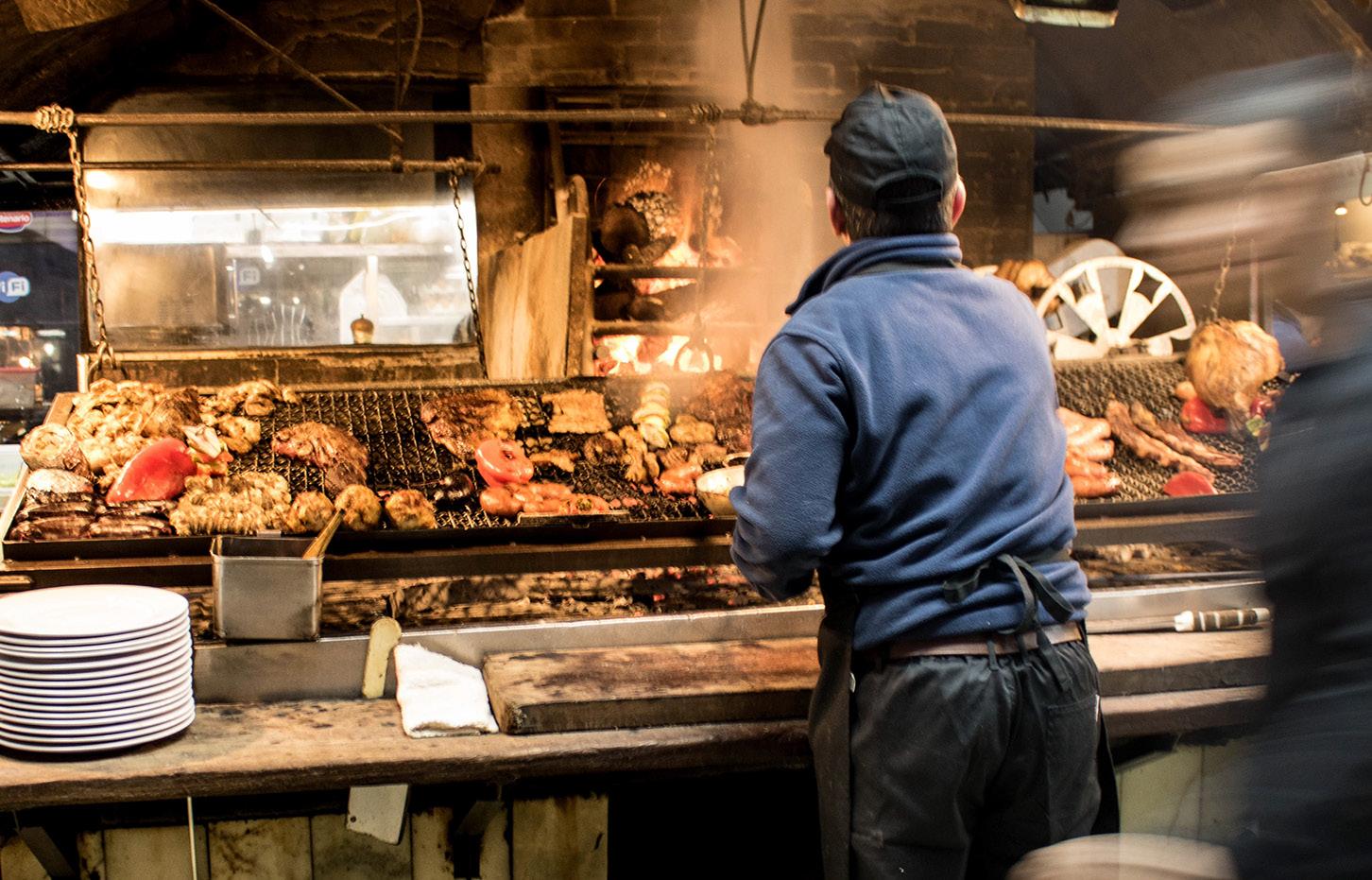
Technical
Viñedos
Chile
director
Familia Chadwick
I think the human factor in the concept of terroir is very important. It has been at the heart of Familia Chadwick from the very beginning – starting with Eduardo, whose vision shaped both the estate and the style of wine he set out to create. On the technical side, Francisco Baettig, who led winemaking for 20 years, played a key role in defining the path toward what Chadwick represents today: a wine known for its finesse and elegance has been very well defined.
Things have changed so much in Chile. The viticultural boundaries have grown, in the north and in the south, not only because of climate change but because of the way winemakers and winegrowers’ understanding has evolved. People dare to try new things
Two years ago, I became technical director; a rewarding challenge. I’m in charge of the group’s winemakers. We have five brands: Errazuriz, Arboleda, Caliterra, Viñedo Chadwick and Seña. I’m directly in charge of winemaking at Viñedo Chadwick and Seña.
I think it’s true that terroir has to manifest itself through the different brands, and each brand has a reason for being. For example, Errazuriz is in the Aconcagua Valley, and it explores the valley and has created quite a broad and innovative portfolio over time. At the other extreme, Viñedo Chadwick is a single vineyard in Puente Alto, and its reason for being is to produce the most classic wine from a classic appellation. So my role does involve ensuring consistency, with an expression of place, but that’s not such a tricky thing to do when the basis of each brand is so well established.
Aconcagua Alto Carmenère
RRP £24
I always say that we’ve learned how to craft a truly proud Carmenère. You can clearly recognise its signature spiciness and chocolate notes. It’s a rich, full-bodied wine with silky tannins that beautifully reflects the Aconcagua Alto terroir.

Eduardo Chadwick is very involved in everything to do with the company. We interact a lot in terms of the technical side, and also from a business point of view. The pursuit of excellence is a central theme here, and that’s very much driven by him. He is constantly looking for opportunities for improvement. So it’s very deeply established in the culture of the team.
I could give you many examples of how Eduardo keeps pushing the quality of the wines. How do we ensure the life of the vineyards for more than 50 years? How do we improve soil health? Should we be fermenting in barrel? Should we do more open-top? It’s a constant questioning.
Today, for me, viticulture is everything –it’s about the place, observation and rhythm. I know that if you’re in the right location and you manage the vineyard properly, the wine will speak for itself. Early in my career, I was driven by curiosity and worked in many different regions. Now, I want to focus on the places where I can truly dive deep into the vineyard and understand it fully.
Sustainability is a core principle for us, and we’re moving toward organic and regenerative farming across all our brands. But sustainability also means social
Las Pizarras Chardonnay
RRP £53
From the coast of Aconcagua, in a hilly vineyard, 12km from the Pacific. It’s like the grand cru within the property. It’s an elegant fine wine with the tension and texture that is quite difficult to achieve. It’s helped put Chardonnay on the map for Chile.

Born in Chile to British parents, Emily studied agronomy and worked in cellars in Napa, New Zealand and Bordeaux before returning home. Considered one of South America’s most influential young winemakers, she took on her current role two years ago
Wines imported by Hatch Mansfield
responsibility. A key part of that is working with the communities around our vineyards – training them in everything from soil management to pruning. Our goal is to build a skilled, committed workforce for the future, not rely solely on seasonal labour.
I find road running very therapeutic; it helps me clear my mind. A few years back, I ran my first marathon in Berlin. I also really enjoy gardening – it’s a wonderful activity to share with young children. I love tending to my kitchen garden and taking pleasure in eating what I grow.

Aconcagua Costa Syrah
RRP £20
The Chardonnay comes from vineyards closer to the Pacific, while the Syrah is grown nearer the Andes, on a north-facing slope. It’s one of my favourite expressions of Syrah – intensely aromatic with spice and floral notes, a deep, vibrant colour, and remarkable tension. A truly beautiful wine.


Tell us a bit about the very early days of Garage Wine Company. How basic were your facilities and how modest were your ambitions?
Garage began as a hobby. The family garage was where we had to work. It might have continued but, when our children arrived, my wife Pilar was offered part-time work outside wine with a perfume and flavourings company.
We missed wine and began to spend more on our “hobby”, thinking if we could make a couple of crackerjack wines then perhaps these would serve as curriculum to help Pilar step back into a proper job in wine when the kids were older.
Fate conspired against our plans and a Dane with wine bars in Copenhagen knocked on the door one day. He had to have the wines and we began to export. I think, because Garage grew organically based upon its own trading, we were never able to make enough – and this scarcity, along with the unhurried style, helped
make what few bottles existed all the more coveted. Pilar never went back to work in a large cellar.
Were you frustrated with the general quality of Chilean wine at that time, or at least what was being sold in the mainstream?
Amongst our winemaking friends there was always good wine around. I suppose we were frustrated with how the wine business was so content to choose the most expedient road to growth, building pyramids of products and looking for trends to jump aboard and scale up. They didn’t dedicate the time nor take on the challenge to make fine wine – besides the so-called icons that were generally overoaked Super Maipos that seemed to be a business apart.
Tell us more about the Coastal Range and the vineyards you found there South America has not one but two ranges
DEREK MOSSMAN KNAPP'S GARAGE WINE CO STARTED OUT AS A SIDELINE. NOW IT'S REGARDED AS ONE OF CHILE'S MOST EXCITING PRODUCERS, WITH A GLOBAL FAN BASE, AND A MISSION TO REVIVE SOME OF SOUTH AMERICA'S PRECIOUS OLD VINEYARDS
of mountains. Chile shares the Andes with Argentina and perhaps one could say that the Argentines got the best side, but Chile got the better mountains: the Coastal Range.
About 110 million years older than the Andes and with lots of metamorphic formations, here there are soils of decomposed granite, schist, slate … in short, the soils of fine wine in the old world. Imagine these soils with old vines, dry-farmed. And with some sites as little as 30-35km from the Pacific! The fruit matures late (mid April) after a long hang-time, balanced and with poise at 13 degrees alcohol – and sometimes less. Hallelujah.
You try to pay your growers fairly. Does that have an impact on the final price of the wines?
We do more than try. And our work in Maule involves much more than paying a better price for fruit. After years of
sharing knowledge and team building, we believe firmly in business as a force for good. It’s just good long-term business. Sometimes we are less efficient in the short-term, but over time one appreciates a large difference from all the small things. One must let the fruit be the centre of everything, remain curious and never stop experimenting.
For years everyone larger and more experienced than us tried to help, suggesting things like “contract out and avoid having full-time employees”. They meant well, but their advice did not align with what we wanted to do. The best model is not always the one with lower costs, and seldom the most convenient.
We got more involved and yes, we spent more money. The work we did was and is arduous, but we have built something –and one can taste it in the glass. And the people, our people, are interested – dare we say excited – to do it all again next year, just a little bit better. At the end of the day, the work must include all of the farming with long-term planning and constant doses of daring.
I think South America can put authentic wine made small on purpose in a bottle at a better price than Europe can. I have seen how this makes for proper work with skilled hands and horses.
Our challenge today is to get beyond village wine offerings, and convince people to pay more for parcels from specific sites. These wines, not just our labels but many dry-farmed in Maule and Itata, are even more competitive than their counterparts from Europe.
What are the strangest vineyards and varieties you’ve come across and what sort of wines have they made?
San Francisco is a Criolla, which means a cross of two varieties crossed in the new world. It took a few years for us to find its groove, but it is a proper wine today.
We are more convinced than ever about how wonderful Syrah can be on old roots in the decomposed granitic soils of the Maule. People generally associate us with Cariñena, but our field blends have much more Syrah and Garnacha than they used to do. (See Sauzal / Pereira / Truquilemu.)
Perhaps the strangest news is our first wine from Spain. In Terra Alta – Catalunya we have made a Garnacha Blanca: Brisat. For years we have said, “when you have
something in the bottle there is something to talk about”. So now we can begin to talk.
You’re a strong advocate for working as naturally and sustainably as possible. Why do you feel these things are so important?
We think regenerative agriculture can help vineyards find better long-term balance and live longer with less stress. We have chosen to concentrate on what is in the glass by doing comparative trials to see how the fruit is affected by differing techniques including composts, solids and tea-like infusions, till and no till, amongst various other factors. We are experimenting to see what the impact is on specific pieces of certain farms.
You now control a third of your vineyards. How is that working out and might the proportion increase? It has already increased. We had to find a means of working with families whose younger generation has left the land. The elders want to stay on the land, but can no longer do the work involved. We grew a small team of the most talented and we move around from small farm to small farm reviving the old vines.
Generally speaking after four or five years yields are stabilised and the vineyards are noticeably healthier and happier. The old vines need to have their dead wood culled to be healthy. You can leave a few plants at the entrance with all of their gnarly twists for the photographers, but proper pruning is the key to revive vineyards.
What are the most important lessons you've learned since you started your Garage Wine Company journey?
Pilar and I have come to the conclusion that small incremental improvements are what explain why some wines and some cellars can attain a level of distinction while others never manage it. One needs guiding principles and a working system for day-to-day work to reflect and compound the improvements being made over time. With a clear and audacious goal, one’s choices become more purposeful.
Anything you regret?
A few years ago we realised that if we could release the Parcels [Parcel Selections & Cru] wines with an extra year in the bottle,
or more, they would sell themselves more effectively by just opening them to taste. Previously, I had put a great deal of effort into preparing people to drink something different to what they were expecting. With more time to finish in the bottle, the wines win over people more convincingly and with fewer words or constructs.
What do you hope you can achieve in the next decade?
Steady as she goes, but we would like to make a bigger dent.
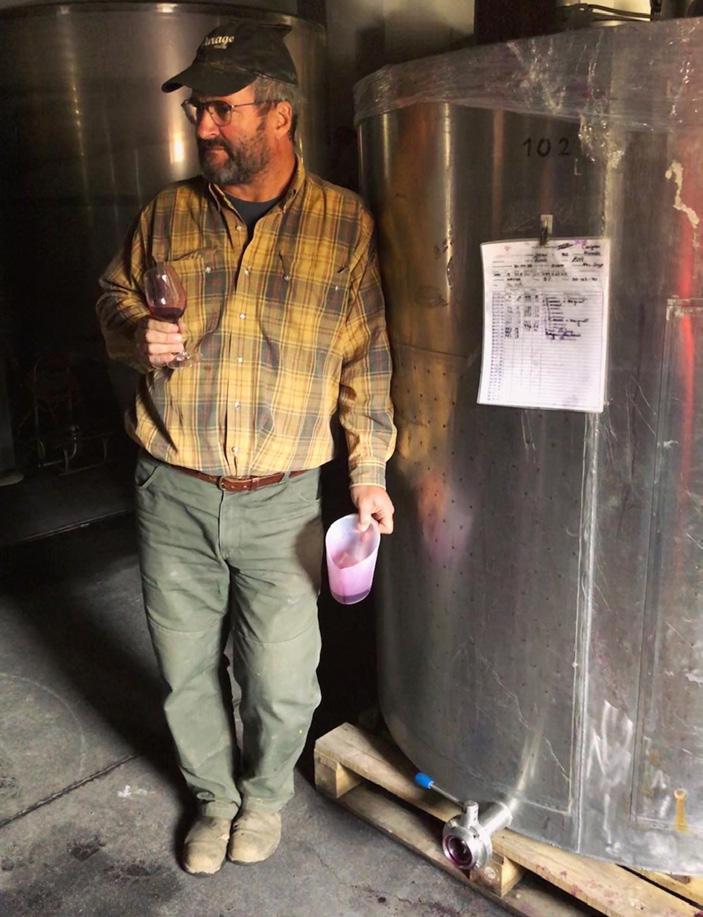
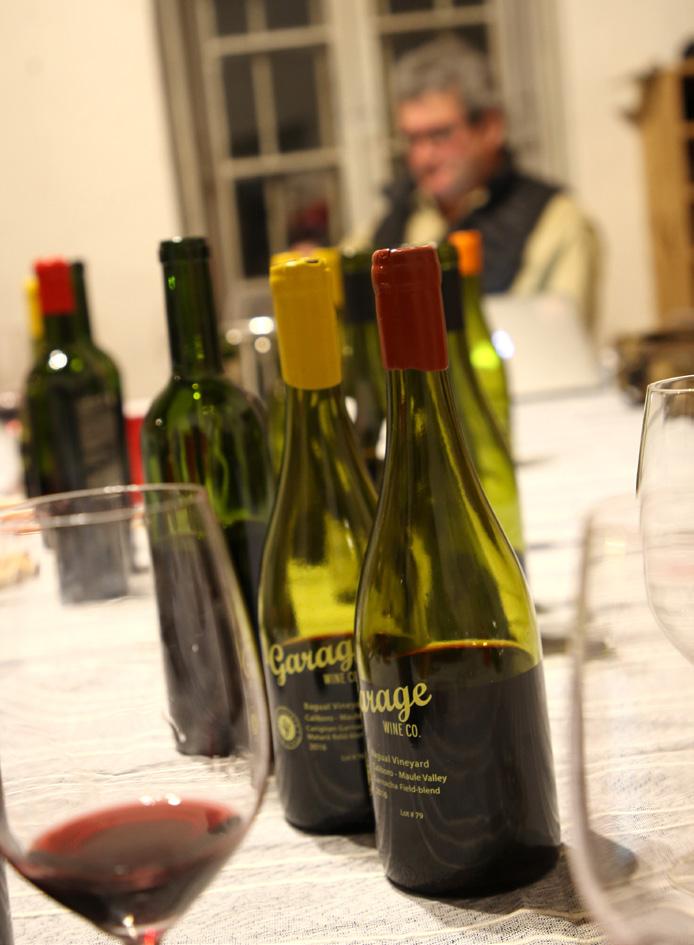
Sponsored feature
Garage Wine Company wines are imported by Jascots Wine
Find out more at jascots.co.uk
Once upon a time there was a lovely Cabernet Sauvignon called Monastier. Monastier came from the south of France and it was delicious, especially for its bargain price. But sales were sluggish. What could be done?
Monastier’s importers scratched their heads, gave the matter some thought, and then decided to redesign the label. How about a picture of rare-breed cattle? Yes –and maybe give the wine a new name.
Sales of Big Beltie, as the wine became known, soared. At the time of writing, they are seven times higher than Monastier ever achieved, and still climbing.
Big Beltie is a star performer in the Cachet Wine portfolio: a wine that has clicked with independent merchants and resonated with their customers. But the liquid – minor vintage variations aside – hasn’t changed. If we’re looking for evidence that wine packaging is perhaps more important than the purists would have us believe, it provides a compelling case study.
Cachet Wine’s sales director David Archibald heads for the south of France every December to check in with existing suppliers and to check out potential new ones. John Charles Townend, MD of parent company House of Townend, goes with him.


Looking for proof that a good label is an important factor in the success of a wine? It’s an extreme – but not isolated – example of how artwork and branding are taken

Archibald picks up the story. “We were tasting the Monastier Cabernet and John looked at me and said, this is great wine for the money. Why do we sell so little of it? I picked the bottle up and pointed to the label, and I said, that’s why we don’t sell more. It’s because the label is a bit supermarkety.”
The producer wasn’t offended by the criticism and promptly offered to change the label to whatever Cachet wanted. Put on the spot, Archibald and Townend couldn’t provide a brief. “All we knew was we just wanted it to look better,” Archibald says.
No further progress was made until, in March 2022, Archibald happened upon a
field of Belted Galloway cattle while on a run with a friend in rural West Yorkshire.
“We stopped, and I started prattling on about what a lovely breed they were. Having grown up on a farm, I was very fond of cows. I had a pet Friesian as a 13-yearold boy.
“I got home. Sitting at my desk, looking out across the valley, thinking about these cows, I suddenly thought: hang on a minute. There’s a very easy and obvious wine label in this.
“I pinged it to our designer and, 10 minutes later, she’d come back with a first draft that went round a little group of five of us that deal with these kinds of things.
“Normally it’s like pulling teeth. You
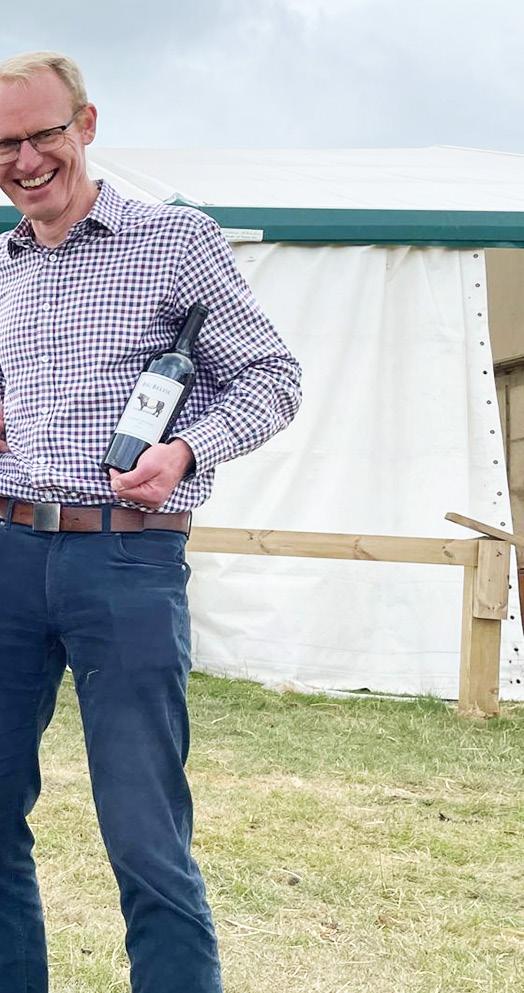
David Archibald and a very important bull
The wine trade isn’t short of critter labels, most of which attract derision and often serve as a klaxon for underwhelming juice produced in industrial quantities. Archibald was hopeful that Big Beltie wouldn’t be viewed in the same way.
“There’s obviously a lot of cow labels,” he says. “But with it being a heritage breed, and having a bit of a story, I was pretty confident it was going to work. I’d like to say it’s maybe a slightly classier label than some that you see out there. So I was pretty confident.
“Am I surprised at the sevenfold sales increase? Yeah, I’m absolutely staggered. I knew it would improve things. If I was sitting here saying sales had doubled, I’d be quite chuffed. If they’d trebled, I’d be thrilled. But it does stagger me every time I look at the sales, and I don’t know where this will end, because even though we’re getting on for three years into this, growth is continuing on a monthly basis.”
Lwine? Big Beltie is a good place to start. taken seriously by suppliers
know, someone likes this, but doesn’t like the font, and well, what if that was blue? It can go on for months and months, and it’s really laborious. But within a couple of hours, everyone in the group had replied positively.”
Big Beltie hit the market in September 2022, and a stagnating Cabernet Sauvignon brand suddenly became hot property.
Am I surprised at the sevenfold sales increase?
Yeah, I’m absolutely staggered. And I don’t know where this will end
ong before Big Beltie, another smartly-labelled wine was making waves in the independent trade. The Liberator is a brand created by Richard Kelley MW of Dreyfus Ashby, taking its name from the juice he “liberates” from South African wineries that might otherwise find itself lost in a blend. “It might be an occasional experimental batch, or possibly an interesting offcut from some proud winemaker’s latest premium release,” he explains.
The first Liberator wine was a 2009 blend of Chenin, Viognier, Chardonnay and Clairette Blanc, a limited edition of just under 3,000 bottles.
It wasn’t public knowledge at the time, but the wine had been made by Eben Sadie. It was supposed to be a private label for a South African retailer, but relations between buyer and seller became strained and Sadie walked away, refusing to jump through the required corporate hoops. Kelley was happy to make him a better offer.
The wine was given a cartoon label of a winemaker clutching an armful of wine bottles and running away from a sinister
giant figure in a suit. Its subtitle was The Bureaucrat.
There have now been 47 editions of The Liberator, each as eagerly anticipated for its label artwork and back story as much as for what’s inside the bottle. The imagery is always playful, and usually a cartoon. Did Kelley ever worry this might be a risky strategy for wine that can sell for as much as £40 for some editions?
“I think once we came up with the name Liberator, that lent itself to thinking about this sort of comic book superhero angle,” he says.
“What we’ve done is put a very good wine in a bottle with a very silly label. But it’s worked, and I think that’s just down to trust and maybe because each of these wines has a story.
“If you look at the first few episodes we did, we were doing a little comic strip with them as well, though I felt that people weren’t really looking at them so


we stopped doing that. So there is always some sort of back story behind the label, which we do our best to try and explain on the website.
“I think what The Liberator has gained since the start is an immense amount of loyalty, not just within trade, but with the consumers as well. So it’s all about trust. I’ve always said The Liberator will fail when an episode fails to sell. The fact that we’re up to Episode 48 this autumn probably proves that things do move through.”
Does Kelley have a general opinion on the sort of labels we tend to see on wines in the independent trade?
“No, not really. I mean, we have a lot of wines on our list with very conservative labels, which I wouldn’t think about changing. But we have a lot of our own designs for French wines, because French taste is very different to what British taste is. So where we’ve got reasonable economies of scale, I’ll do my own labels for them, if we can justify it.
“But on the whole, I don’t meddle with labels from our existing producers unless we can sell more wine with a different label.
“A good example of that would be our [Château Béthanie] Crémant de Jura yellow label, which we did the artwork for ourselves, because the actual co-op label is really dreadful, and that’s one of our bestselling wines.”
Graham Holter
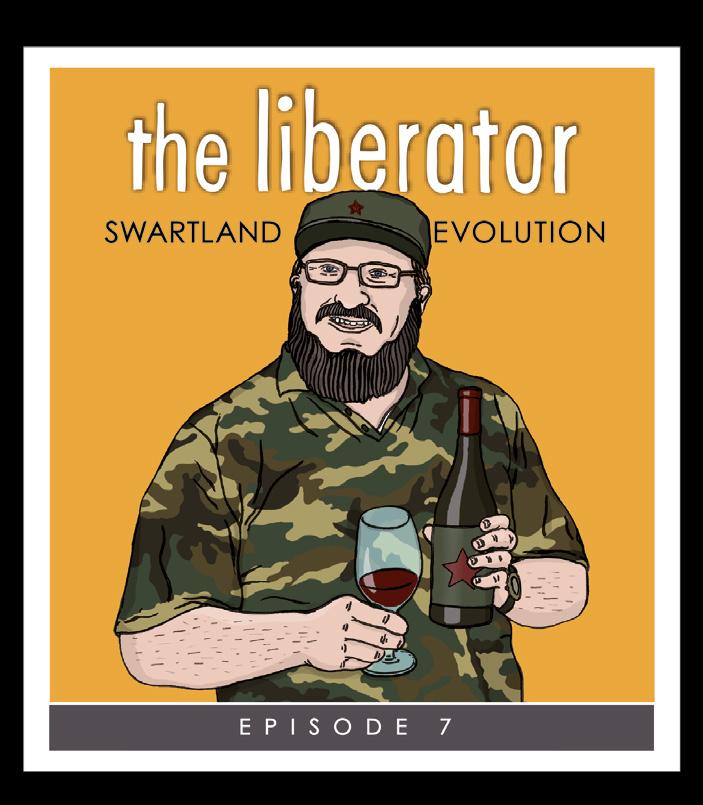
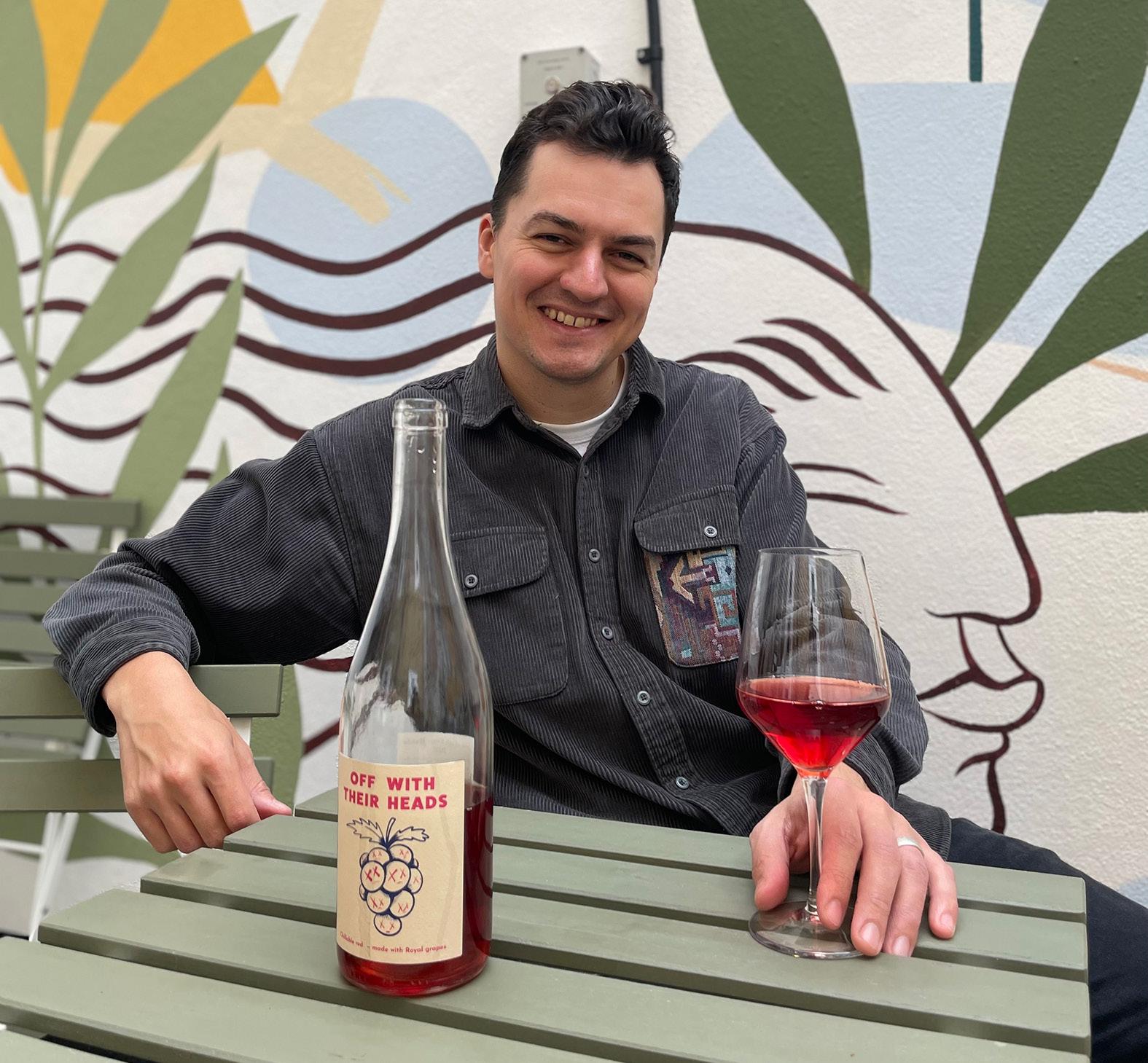
Tom Grater
Crystal Palace Wine Club, Anerley Hill and Brixton, south London
Grater imports some of his own wines and he's responsible for the labels too.
“A friend of mine in Spain makes wine for us; we ask him to make certain styles,” he explains. “We design the labels with another friend who is a graphic designer.
“We’ve done three: In The Club, an orange wine; Apricot Sandwich, an orange and white blend; and a chilled red called Off With Their Heads. They’re superimportant for both of our bars and we wholesale them a little bit as well.
“I have always believed that the label is first port of call when it comes to buying a wine. It really depends on the consumer, but I would still put it up there as the number one reason that people tend to pick up a bottle.
"Some people are only going to pick up a wine if it's got some kind of château building on it, or if it says Burgundy. But a lot of our customers are seeking something a little more outthere. Personally, I like a really colourful label, because if you see something really bright and bold and attractive, your eyes just go straight to it on the shelf. Absolutely no question.
The label is the number one reason that people tend to pick up a bottle
“If a wine has a naff label, that’s an extra hurdle for me to overcome in selling it. If I have a great label, then the consumer is more likely to buy it, and if I have a rubbish label, the consumer is less likely to buy, so I might as well make my job a little bit easier.
“Our labels are playful and they represent what’s in the bottle, which are easy-drinking, delicious, fun wines that are supposed to be for everyone. The label for In The Club is a bull on a disco dance floor. The club is a reference to our business and the wine is from the part of Spain where bullfighting is a big deal, so it’s telling a story.”
The label for Apricot Sandwich depicts a crocodile eating a peach. But despite the fondness for animal imagery, Grater has his red lines.
“I find dogs on labels a little bit problematic because it makes me think of the smell of wet dog, which is a famous way of describing a wine that’s corked,” he says.
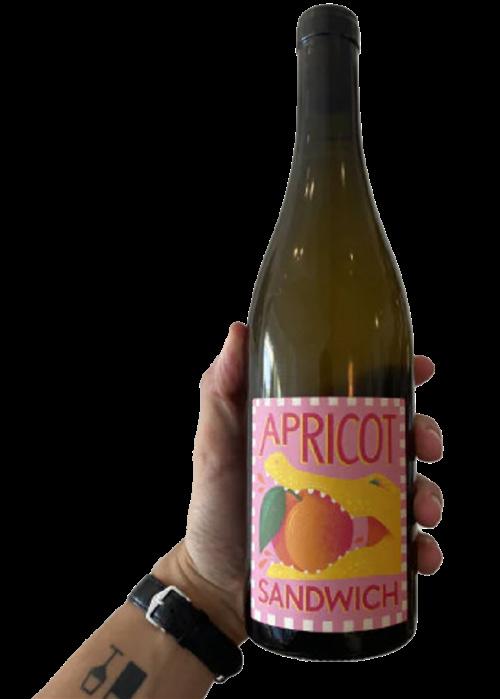
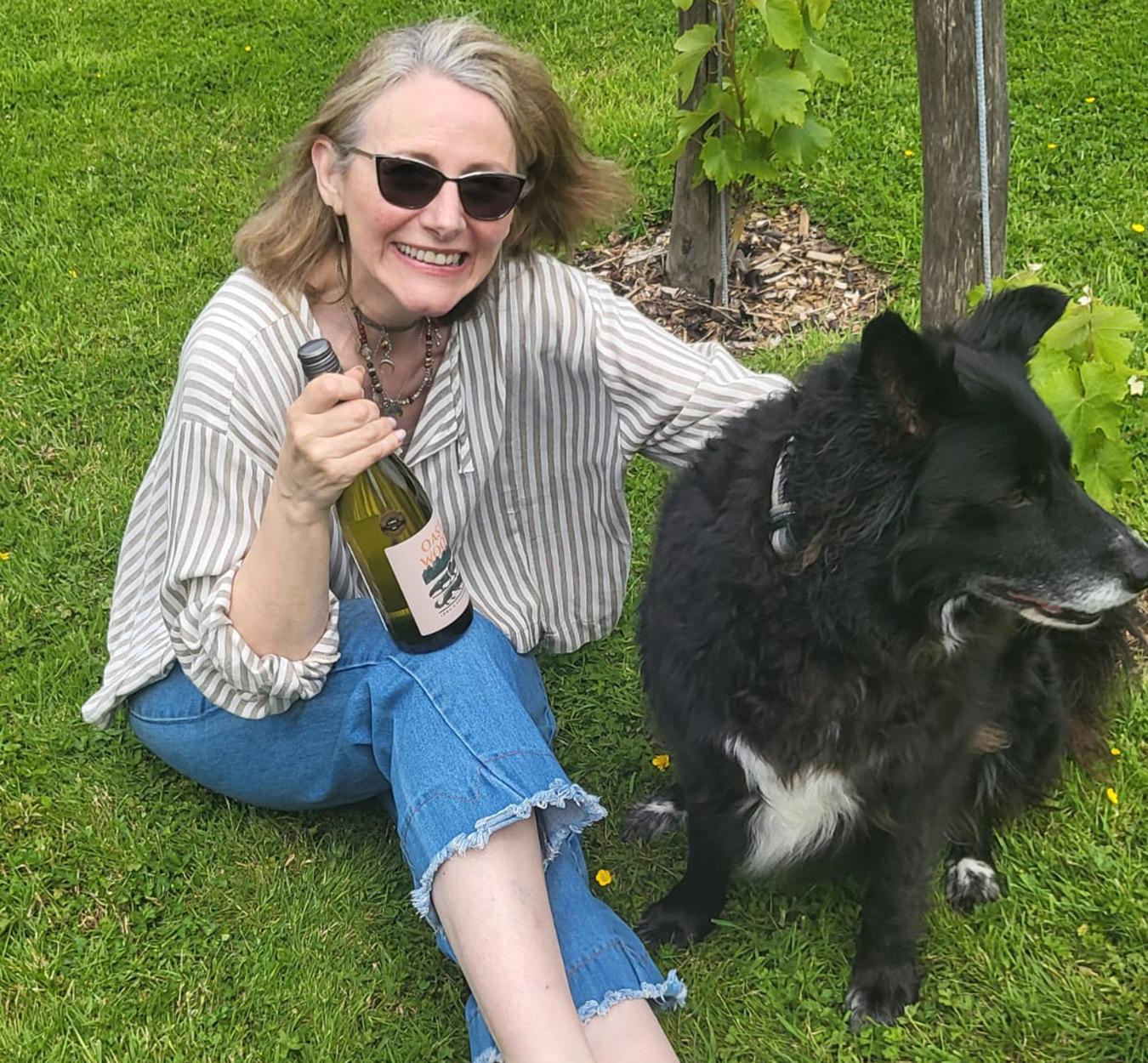
Noah’s Goat, Hastings
Unlike Tom Grater at Crystal Palace Wine Club, Holt has no problem with doggy labels. “We’ve just visited a local vineyard called Oast Wood, and they’ve released a lovely Bacchus,” she says.
When people come in and are browsing, I always think of it like a bookshop
“It’s very herby and will pair well with food. The label pictures their gorgeous dog, Luna, and it’s called Luna’s Bacchus. They have an orange wine called Flock, which has their sheep on the label. The sheep are important because they graze on the vines to keep the weeds down.
“That kind of thing is lovely because I will tell people all about the sustainable practices in the vineyard, the owners, Stephen and Kate, and their dog. It all helps with the storytelling and the label is a good way to garner interest.
“Design is important, but obviously different people are attracted to different things. When people come in and are browsing, I always think of it like a bookshop. Often, I’m drawn to a book by its cover, but then I’ll read the back to see if I like the story or not.
“That seems to be our experience in our wine shop. Unless they know exactly what they are looking for, people will go along the shelves and stop at various labels and then read the back, or they’ll read our label which explains a bit more about the wine and what it pairs with.”
Holt lists three other wines whose labels have captured imaginations.
“We couldn’t not stock the Fairview Goats do Roam,” she says.“People bought it in droves at Christmas because of the name of our shop and they thought it was funny. I also like the Felicette branding, having the continuation of the cat image on the cork as well; it’s such a nice detail. I often tell customers the story about Felicette being the first cat in space in 1963. You know they will repeat it at their dinner party because it’s a story that people can relate to.

Deborah Brooks, marketing manager for Boutinot, highlights wines that owe some of their success to the efforts of the design team
I’d pick out Alo Jais Noir Carignan and Ordinal White Piquepoul/ Roussanne – and when we overhauled our white Burgundy range from a euphemistically “traditional” Burgundian design to a classy but modern package (Genetie), we saw initial sales increase by 30% within a four-month period.



In the southern hemisphere, Robin Naylor, our product manager and creative genius, has launched wines which have become soft brands due to their eye-catching appeal: Pablo y Walter Malbec from Argentina, Cloud Factory Marlborough Sauvignon Blanc, Good Luck Club Cab Sauvignon from Australia and a Chilean Sauvignon called Kraka’tini. The wines really pop from the shelf.

Impactful design has played a big part in our most recent launch, Tuttavia Spritz, an Italian aperitivo. There’s no question that the product is good, but the stand-out design has got us listings from the Cayman Islands, across Europe and to the UK in less than six months.
“Alice Verdeca has a beautiful label: blue with an illustration of a large fish. It’s a great wine to have with fish so it does what it says on the tin – brilliant! While the labels don’t sell the wine, they go a long way towards helping people engage with it.”
Merchant interviews by Claire Harries

In this exclusive Wine Merchant mini-series Sunny Hodge, author of The Cynic’s Guide to Wine, extrapolates a single topic from each chapter of his book.
The book lays out the scientific connections in wine, from soil to fruit to glass, and onwards to our own sensory perception. It references the latest in soil science, viticulture, microbiology and neuroscience to present wine professionals and experts, ensuring what we say about wine is technically and scientifically correct.
Why is it that wines smell so different to the grapes they come from? It’s obvious: because of fermentation, right?
Being in a customer facing-role, I really wanted to get my head around the nittygritty of what specifically brings about the aromas customers were asking me for.
The Cynic’s Guide to Wine is littered with explanations to where these aromas come from; biological and chemical pathways that forge their way through fermentation and into your wine. Let’s take one family of common aroma compounds for this brief read: terpenes.
Terpenes are uber-aromatic compounds that are utilised across a diverse spectrum of the plant kingdom. See, the issue with plants is that they’re incredibly slow movers. As a result, they’ve had to develop some extraordinarily crafty chemical mechanisms to ensure they get what they want.
Terpenes are largely used by plants as animal and insect manipulators. 75% of flowers use the floral-smelling terpene linalool to smell too damned good to pass up – if you’re a


bee or pollinating insect, that is. It’s so wonderfully aromatic that we humans manufacture linalool and use it within domestic cleaning products to smell fresh and outdoorsy.
Geraniol is a terpene that rose flowers have adapted to do the same and is the reason they have that distinct sweet smell. Sesquiterpene rotundone is responsible for the distinctly spicy black pepper smell in cracked peppercorn, rosemary, and Syrah. Rotundone isn’t particularly enjoyable for insects and is used as a detractor to keep plants insect-free.
Linalool florality, geraniol rosiness and rotundone black pepper vibes can all be


found in certain wines –but not so much in the grape. The reason being that most terpenes within a grape are glycosidically-bound –ie chemically attached to a sugar molecule. Sugar molecules are relatively heavy things, so weighty that they can’t go airborne and travel to our nose – they have no smell. A glycosidically bound terpene is essentially handcuffed to a sugar molecule, too heavy to enter the air and become an aroma. When a stray yeast comes along in fermentation, it’ll eat that sugar molecule, breaking the bounds of the terpene and freeing it up to go airborne and become an aroma.
Lots of these terpenes exist in the skins of grapes, explaining why skin contact wines smell so distinctly different and often more floral than their white wine counterparts. Aromatic varieties like Gewürztraminer, Moscato, Torrontes and Viognier are genetically rich in terpenes. That’s what makes them aromatic.
I speak with people about this at the shops and there’s always this mind-blown “aha!” revelation. Well worth testing out on a customer or two.
Follow @sunnyhodgewine on Instagram for more handy wine science facts.
The Cynic’s Guide to Wine is available online at Waterstones, Amazon, Academie du Vin Library and all good book retailers.
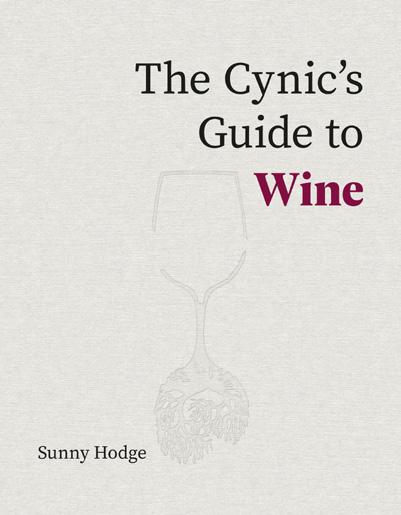
New Bank House
1 Brockenhurst Road
Ascot
Berkshire SL5 9DL
01344 871800
info@hatch.co.uk
www.hatchmansfield.com

@hatchmansfield

020 7720 5350
order@libertywines.co.uk www.libertywines.co.uk

@liberty_wines



Altos Las Hormigas are renowned for their wonderfully expressive Malbecs from outstanding sites in the Uco Valley. Their certified organic Jardín de Hormigas vineyard in Paraje Altamira was mapped and analysed by Pedro Parra when planted in 2017. Each of the 22 plots is farmed and harvested individually, producing incredible wines with unique personalities across 23 different soil types.
Sourced from four plots and aged in concrete for 12 months, Meteora was originally intended to offer a more straightforward style of Malbec from this vineyard, yet it is complex and surprising with tension and texture on the palate. Los Amantes comes from a single 1.2-hectare plot in the southern part of the vineyard and is aged in untoasted 3,500-litre French oak foudres for 15 months before a further 12 months’ ageing in bottle. The wine is elegant and aromatic with a delicate freshness from the silt-rich topsoil.
New to our list this year is their stunning Blanco – an unoaked blend of 80% Chenin Blanc, 15% Pedro Giménez and 5% Semillon from 80-year-old vines grown in deep limestone-rich soils in San Carlos and Paraje Altamira. The three grape varieties were harvested early, fermented using only indigenous yeasts and aged for six months in concrete vats. The resulting wine is elegant and textured with a strong backbone of acidity and a long finish with saline and floral notes.

roberson wine
21-27 Seagrave Road
London SW6 1RP 020 7381 7870
enrico.marcolungo@robersonwine.com

robersonwinetrade

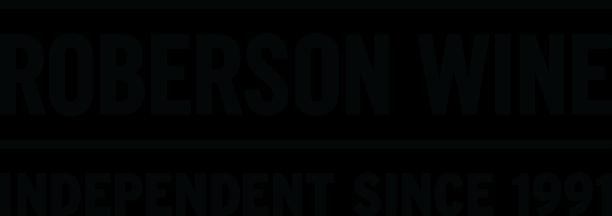
28 Recreation Ground Road
Stamford Lincolnshire PE9 1EW 01780 755810
orders@abs.wine www.abs.wine

@ABSWines




Unit 5, The E Centre
Easthampstead Road
Bracknell RG12 1NF
01753 521336
info@buckingham-schenk.co.uk www.buckingham-schenk.co.uk

@schenkfamilyuk

7-9 Elliott’s Place London N1 8HX
020 7288 8888
sales@jeroboamstrade.co.uk www.jeroboamstrade.co.uk

@jeroboamstrade

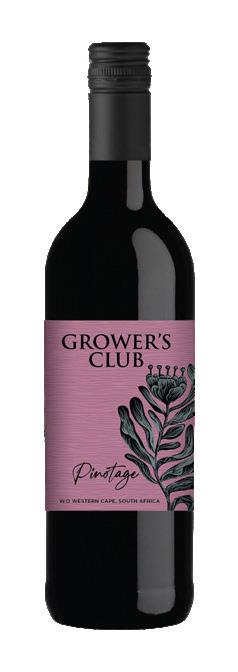




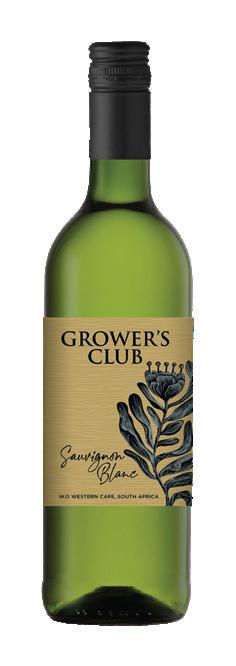
At Grower’s Club, the journey from vine to wine is one of care and sustainability. Our wines are a reflection of the unique climate, soil, and people of South Africa — bold, authentic, and full of character. Grower’s Club was established by a collective of passionate winemakers, each with their own history of craftsmanship and tradition, working together to produce small-batch wines that honour the rich diversity of South Africa’s landscapes. By handpicking the finest grapes from each vineyard, they ensure that every bottle tells a story of the sundrenched hills and lush valleys of the Cape Winelands.
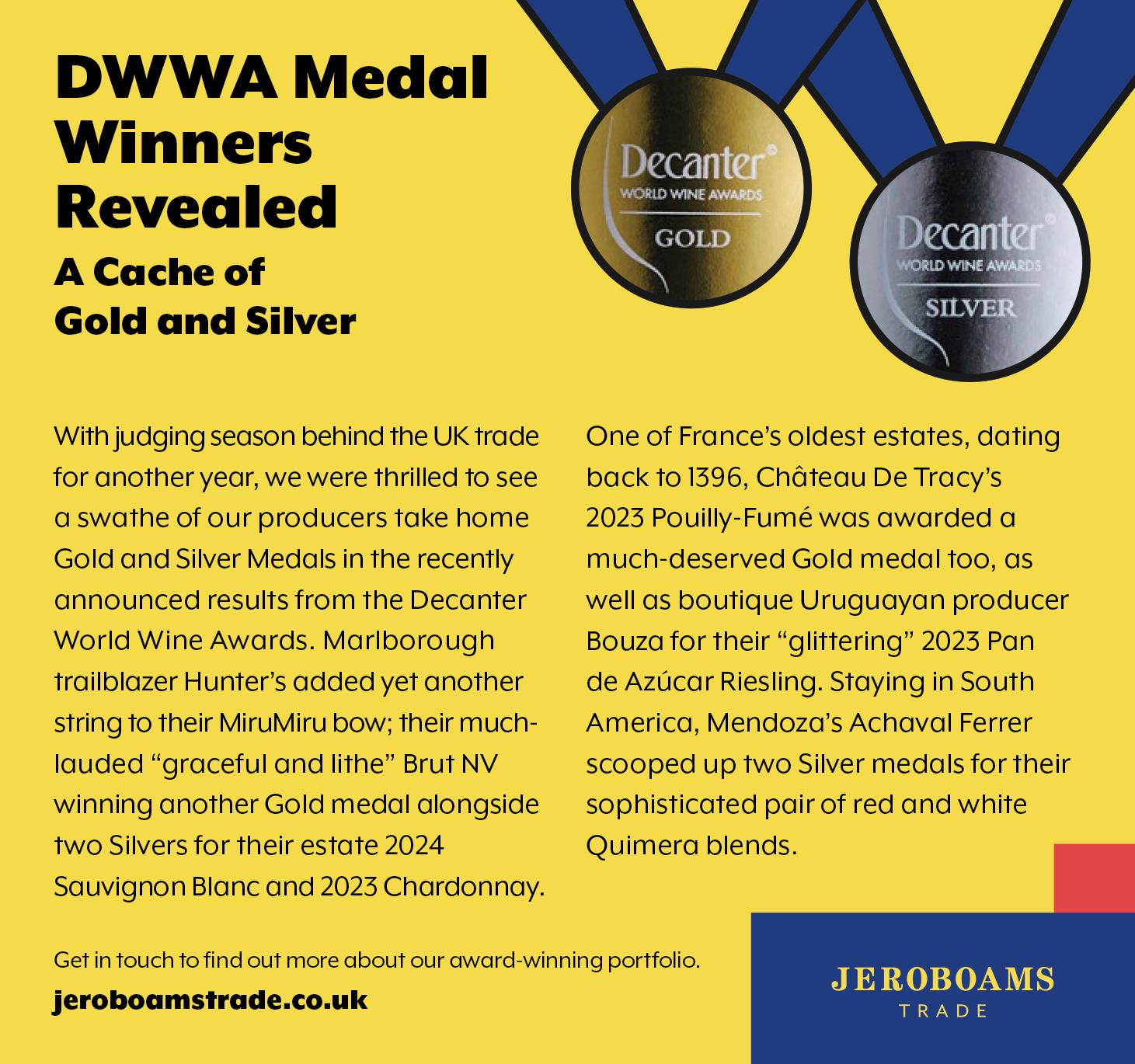


Langlois Launches Their First Organic Crémant de Loire: Blanc de Blancs 2020 Extra-Brut Bio
To mark their 140th Anniversary, Langlois is delighted to add a brand new cuvée to their permanent range, their first certified organic Crémant de Loire! Not only is this their first certified organic Crémant de Loire, but it is also their first Blanc de Blancs. This milestone cuvée celebrates the purity and brilliance of Chenin Blanc, Langlois’ signature grape, which makes up 58% of the blend. This is underlined by the liveliness of the Chardonnay, the lack of malolactic fermentation and a low dosage of 2g/l.
Aged for three years on the lees in Langlois' historic ‘tuffeau’ cellars and matured for a further six months after disgorgement, this bold 2020 vintage embodies the Maison’s deep-rooted commitment to the environment - ushering in a new era of sustainable excellence.
For more information, please contact your Mentzendorff Account Manager

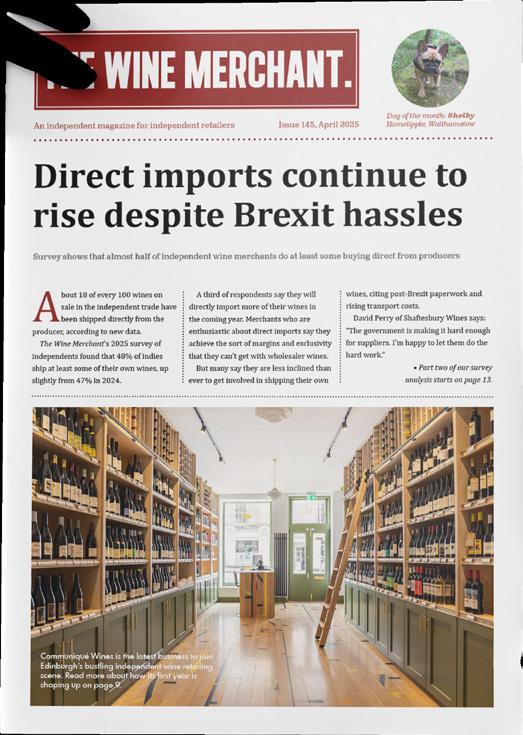
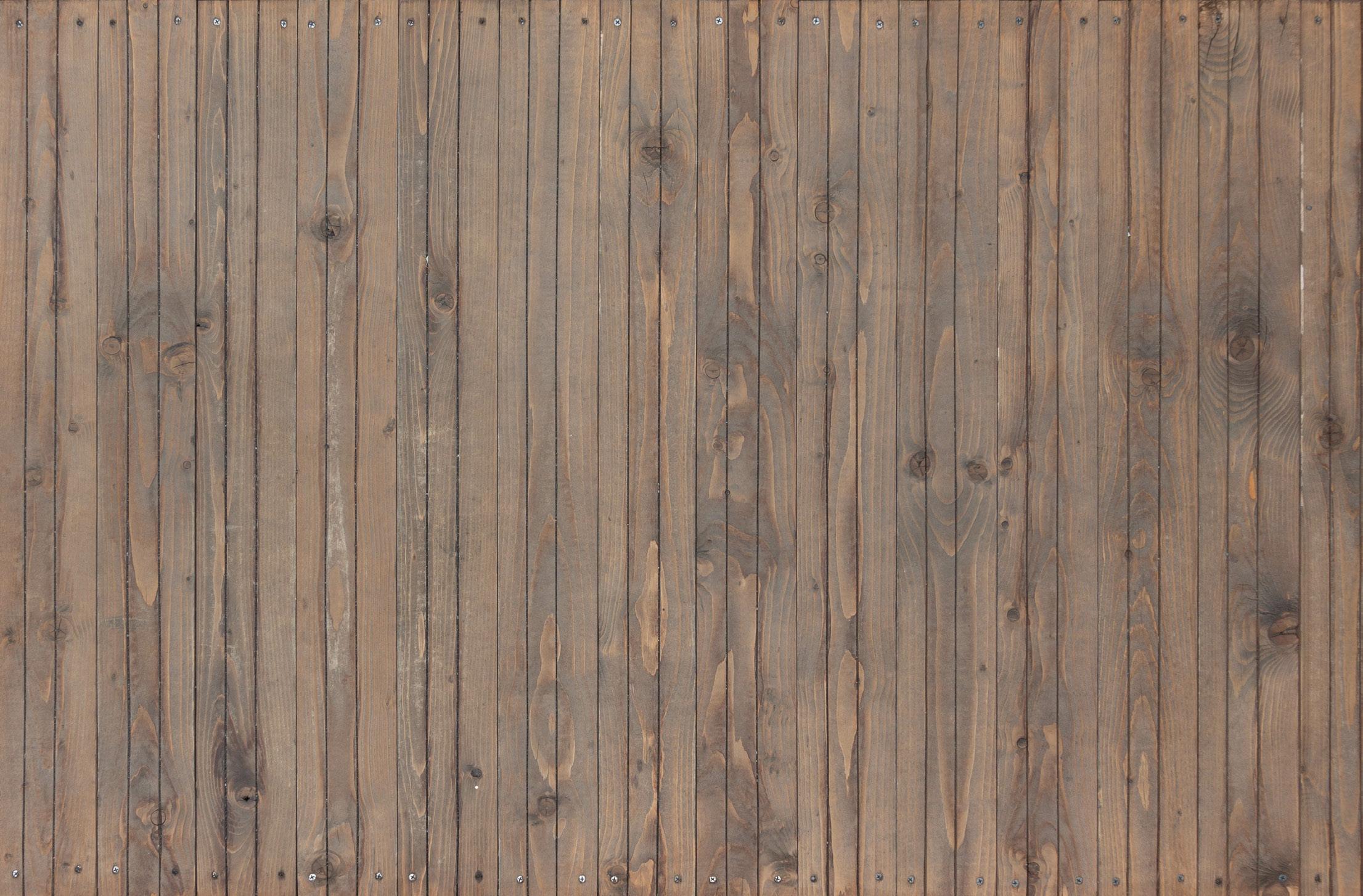


The Links, Popham Close
Hanworth TW13 6JE 020 8744 5550
Mark Isham, south & London: mark@richmondwineagencies.com
Julia Langshaw, north of the UK: julia@richmondwineagencies.com
Tim Hawtin, south west & London: tim@richmondwineagencies.com
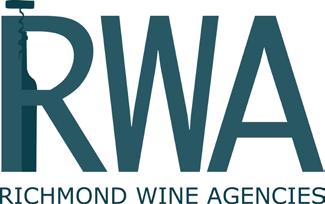



RWA are pleased to announce their new partnership with the dynamic English wine producer Wildshark.
Wildshark Vineyards is a young estate nestled at the base of the North Downs in Kent. In 2022, it planted 60 acres of new vines on an area of ancient soils. The vineyard takes its name from these Cretaceous soils, 50 million years ago the land was the bed of an ocean where numbers of sea creatures used to preside including white and megalodon sharks that swam in vast numbers amongst the many other weird and wonderful creatures of the deep.
Wildshark works with a minimal-intervention approach, farming sustainably and encouraging a diverse ecosystem. It is certified with Sustainable Wines of GB and strives to produce excellent wine.
The range: Bacchus Dry White | Pinot Gris | Bacchus Fumé (oaked) | Chardonnay | Pale Rosé | Ciel Rosé Pinot Noir | Supernova Sparkling Brut | Supernova Sparkling Blush Rosé.
Please contact Mark, Julia or Tim for pricing



We are delighted to share that Journey’s End is officially B Corp Certified, making it the first South African vineyard and winery to receive this prestigious global accreditation.
Sustainability has been at the heart of Journey’s End since it was founded in 1995, and this milestone reflects its holistic approach to sustainability, encompassing its climate resilience and biodiversity protection, as well as their social impact. This award is testament to the company’s longstanding commitment to crafting exceptional wines while being a force for good across all aspects of the business – social, economic and environmental.
Congratulations to the entire team at Journey’s End for this outstanding achievement.
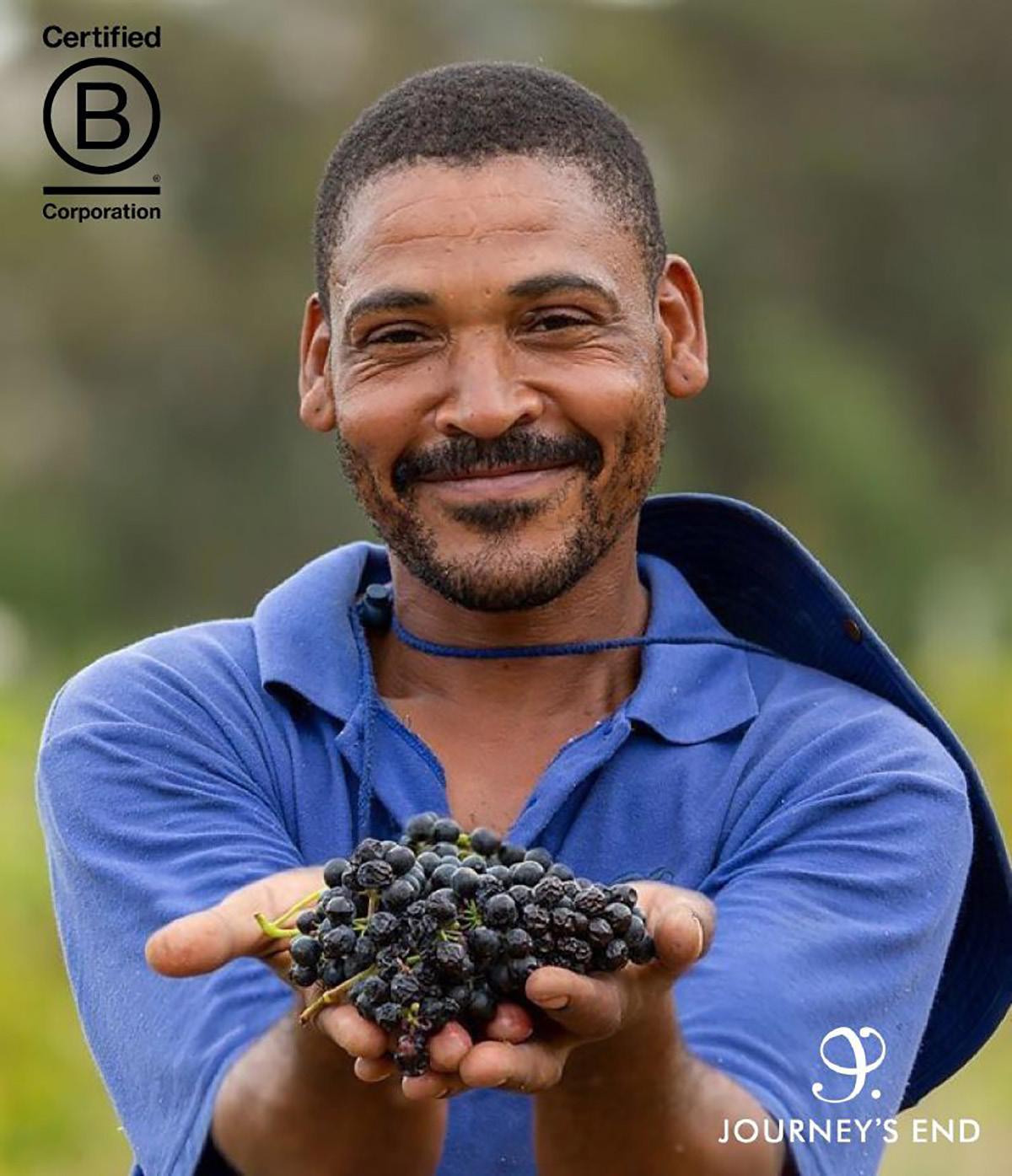
Fells House, Station Road
Kings Langley WD4 8LH
01442 870 900
For more details about these wines and other wines from our awardwinning portfolio from some of the world’s leading wine producing families contact:
info@fells.co.uk www.fells.co.uk

@FellsWine

je_fells
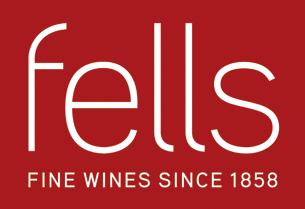
12-14 Denman Street
London W1D 7HJ
0207 409 7276
enquiries@louislatour.co.uk www.louislatour.co.uk

@louislatouruk




“ Long and precise. The best ever of this bottling.”
James Suckling 95/100 points
McHenry Hohnen, founded in 2004 by Murray McHenry and David Hohnen in Margaret River, Western Australia, is a family run winery celebrated for its biodynamic and organic viticulture. The estate spans three vineyards – Burnside, Calgardup Brook and Hazel’s Vineyard – each producing distinct, site expressive wines. Hazel’s Vineyard, planted on virgin ironstone gravel in 2001, yields flagship Chardonnay, Cabernet and the acclaimed Bordeaux blend “Rolling Stone”. In July 2020, the winery and Hazel’s attained formal biodynamic certification after years of regenerative farming. Their winemaking philosophy emphasises minimal intervention – wild yeast fermentations, minimal sulphur, and no filtration – to deliver wines that truly reflect their terroir. With elegant whites, structured reds, and intriguing Rhône and Zinfandel varieties, McHenry Hohnen exemplifies sustainable excellence in Margaret River.

For more information, please contact sales@louislatour.co.uk or scan the QR code.
delibo wine agencies
The Old Pigsty, Rose Cottage Church Hanborough OX29 8AA
07802 405627
orders@delibo.co.uk www.delibo.co.uk
We are proud to work with these two family-owned estates: Delheim from Stellenbosch, and Raka from Klein River.
Delheim was one of the founders of the Stellenbosch Wine Route and this historic Simonsberg estate continues to be a champion of biodiversity with over 120 indigenous plant varieties on the farm. Always a pioneer, Delheim was the first producer of rosé from Pinotage in 1976 with old vines and unique terroirs.
Delheim now has Noni Langa at the helm: the 2023 Diners Club Young Winemaker of the Year. From lifestyle wines to Platter’s 5-star terroir-focused wines, explore how Delheim is worth the journey …
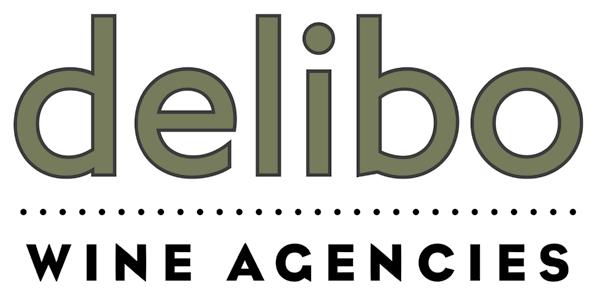
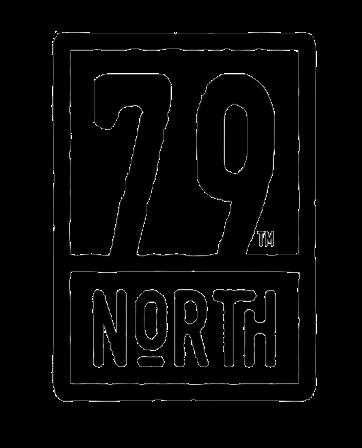


Named after owner Piet Dreyer’s black fishing vessel, Raka is east of Hermanus and Walker Bay in the Western Cape. The hard work in the gravity-fed cellar of Josef Dryer, Piet’s son, has also been recognised by Platter, with the Quinary and Biography reds leading the way.
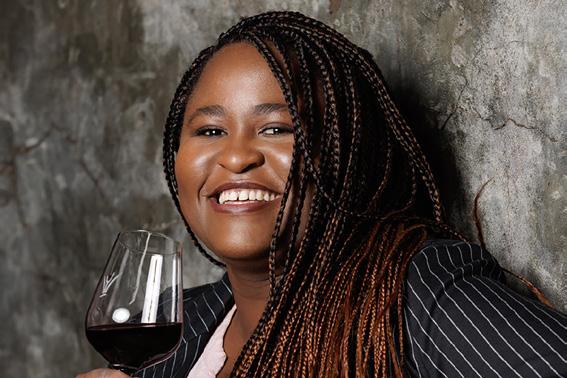

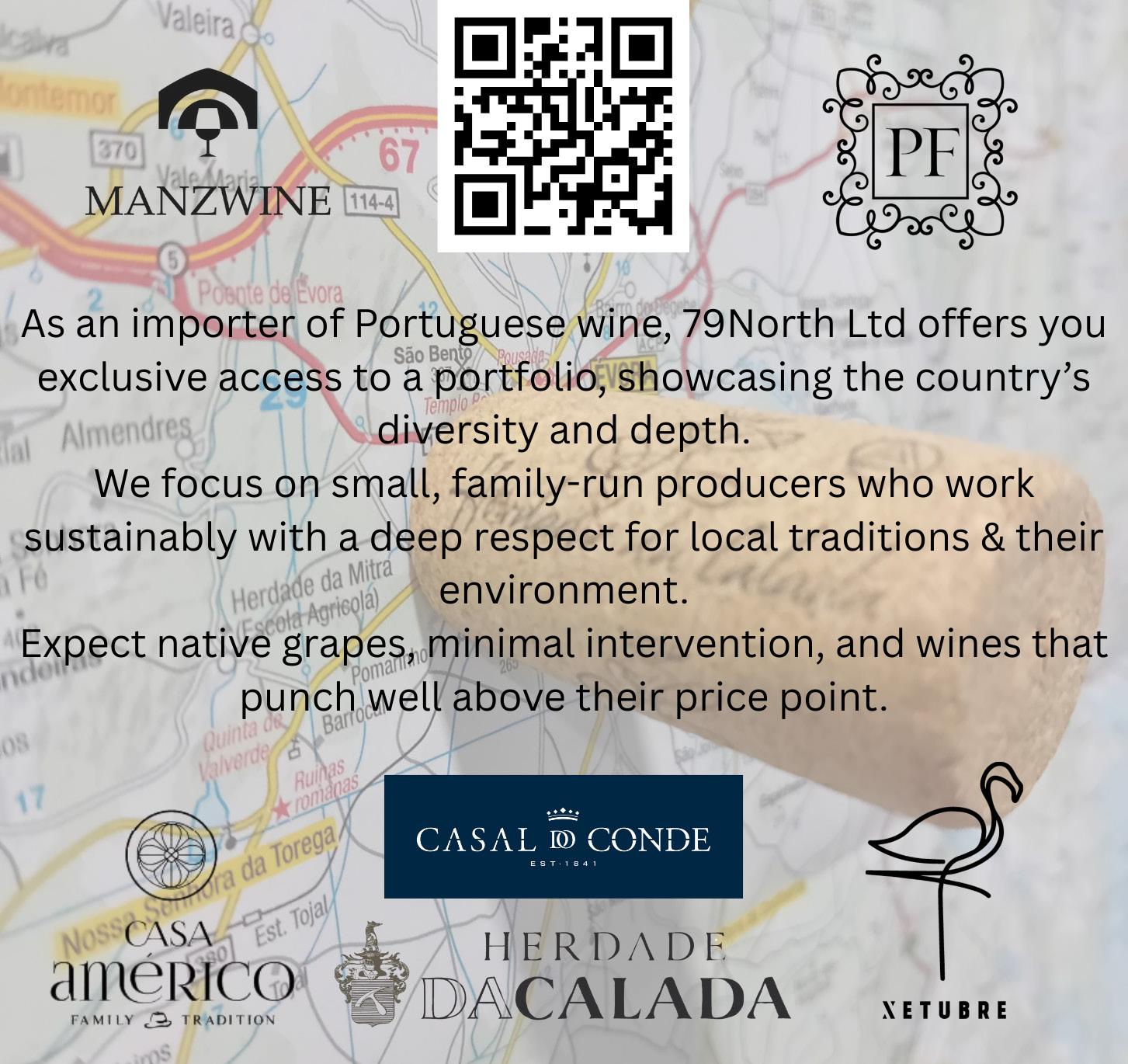
hallgarten wines
Mulberry House Parkland Square
750 Capability Green
Luton LU1 3LU 01582 722 538
sales@hnwines.co.uk www.hnwines.co.uk



@hnwines


top selection
23 Cellini Street London SW8 2LF
www.topselection.co.uk info@topselection.co.uk
Contact: Alastair Moss Telephone: 020 3958 0744


@topselectionwines
@topselection





“I read cookbooks end to end, like novels”

Joe began his wine career at Oddbins in 1992 and later spent five years as a buyer for Waitrose. Now working as a freelance wine trade consultant and judge, he is one of the industry’s most recognisable TV personalities, appearing regularly on shows such as Food & Drink, This Morning and Saturday Kitchen, as well as on his own YouTube channel.
What’s the first wine you remember drinking?
Schloß Vollrads Riesling Auslese 1971. I was eight.
What job would you be doing if you weren’t in the wine trade?
I would still be a pilot. I miss flying every day. I didn’t keep it up after leaving the RAF in my twenties. After flying upside down
in the Hawk trainer over Wales, renting a four-seat Cessna at the weekends kind of lost its appeal.
How do you relax?
I watch too much television. I love watching the darts – I always believed I could have been quite good with enough practice –and my beloved Liverpool FC. I fantasise about travelling somewhere warm all the time, so Emma and I love to have a glass of wine and watch A Place in the Sun. That started during lockdown.
What’s the best book you’ve recently read?
An hilarious cookbook called Thug Kitchen (Eat Like You Give a Fuck). I read cookbooks end to end, like novels.
Give us a Netflix (or any TV)
recommendation.
Gomorrah on Sky TV was the best and most riveting TV show I have ever seen based on true accounts about the Camorra drug mafia in Naples. Shrinking on Apple TV was very cool too.
Do you have any sporting loyalties?
Ah, I might have let that one slip early. Liverpool FC, obviously, and Nathan “The Asp” Aspinall in the Professional Darts Corporation. If I had to pick an F1 driver, it would be George Russell. I have a feeling he’ll get his shot one day.
Who’s your favourite music artist?
Phew, now you’re asking … so many. Music is on all the time when I am travelling anywhere. I don’t think I can pick just one. In the spirit of looking clever, I’ll say Wolfgang Mozart. It could just as easily have been Busta Rhymes.
Any superstitions?
I always play Jack Four in hold ‘em poker, despite it being a terrible hand.
Who’s your favourite wine critic?
David Williams. He mixes a romantic passion for wine and an attractive, lyrical writing style with a deep understanding of the subject.
What’s your most treasured possession?
My dad’s knife roll. (A set of kitchen knives.)
What’s your proudest moment?
It’s cheesy, but seeing my children being born.
What’s your biggest regret?
No regrets. Whatever happened in my life brought me to this point. Right now I am happier than I have ever been.
Who’s your hero?
My wife, Emma.
Any hidden talents?
One or two … I’m quite good at tasting wine, flying planes and mimicking accents.
What’s your favourite place in the UK?
The Lake District. I was born in Kendal.
If we could grant you one wish, what would it be?
To be closer to my two children, both geographically and spiritually.
